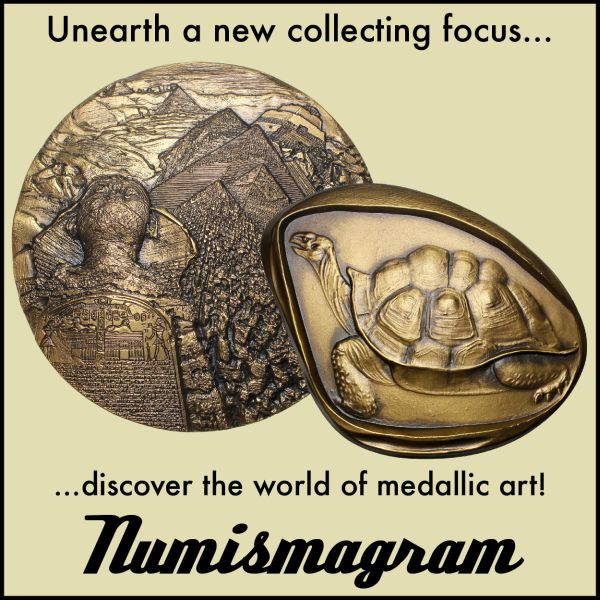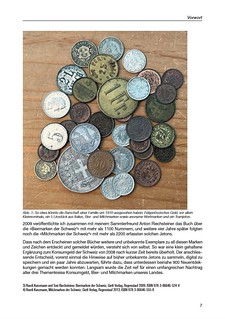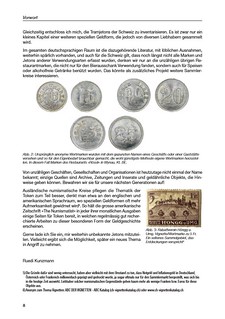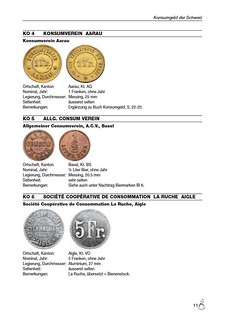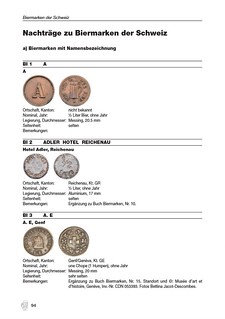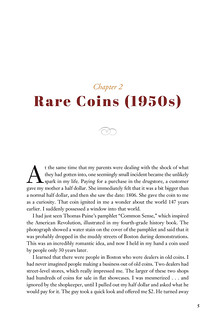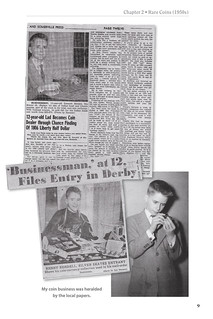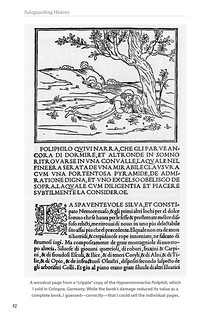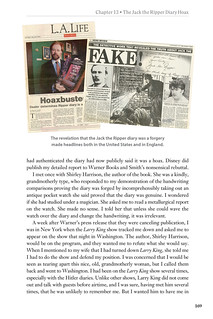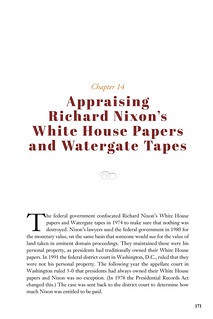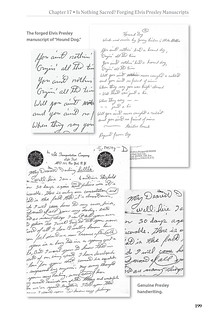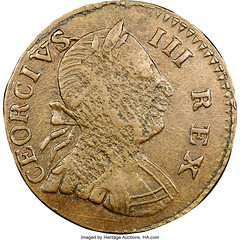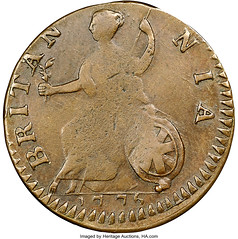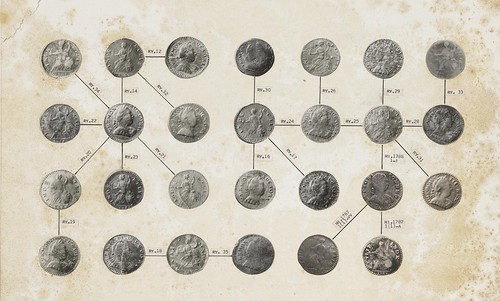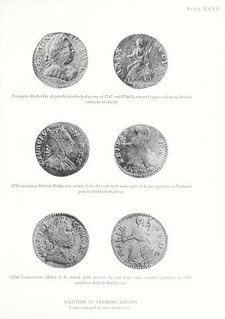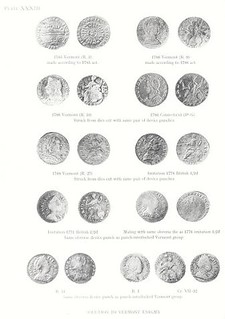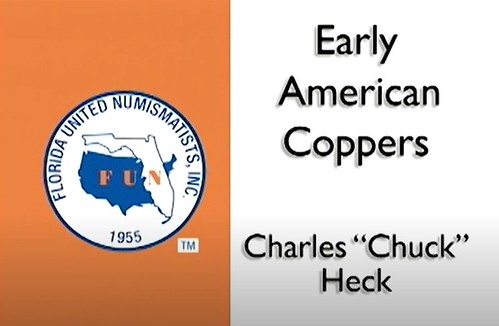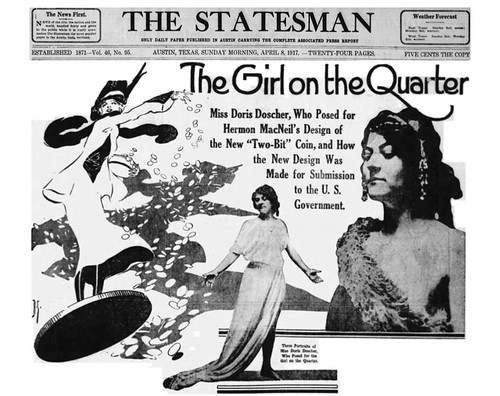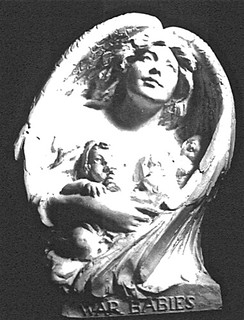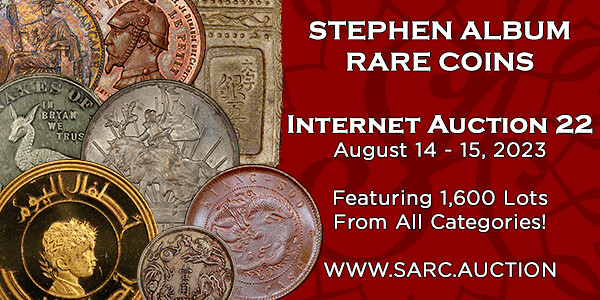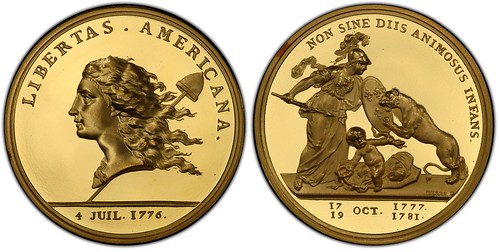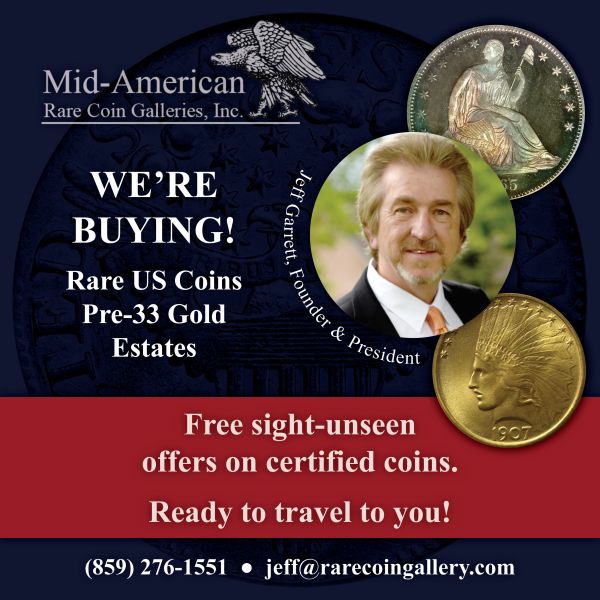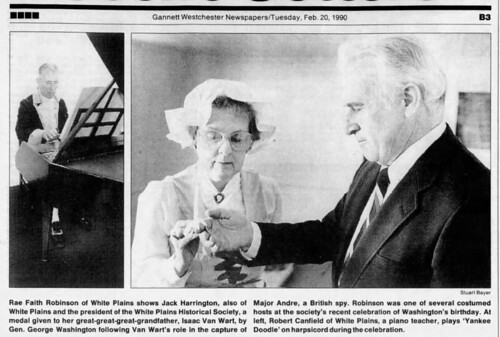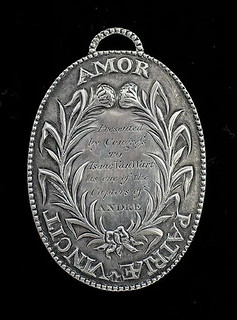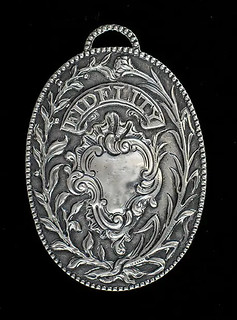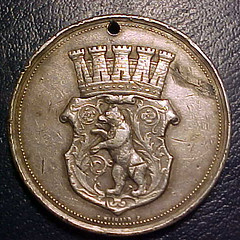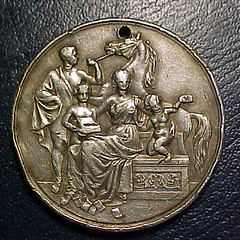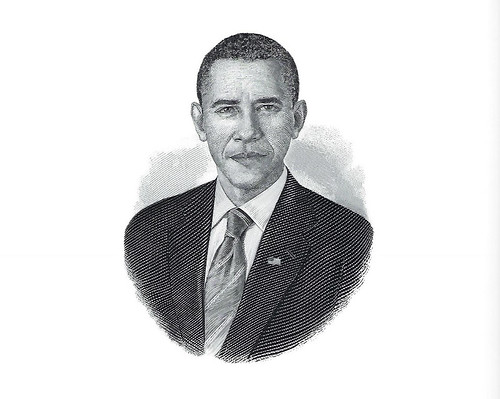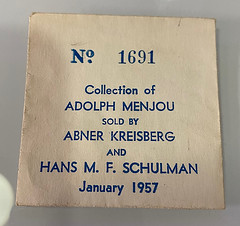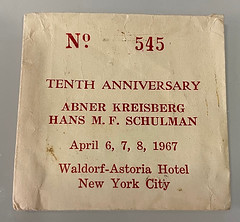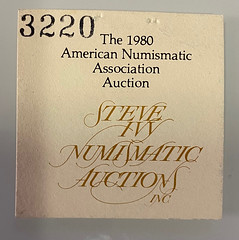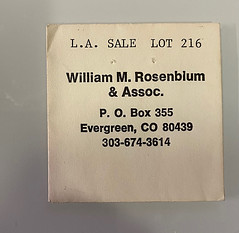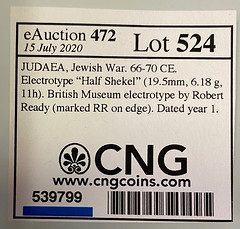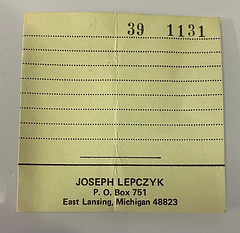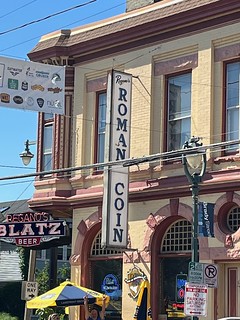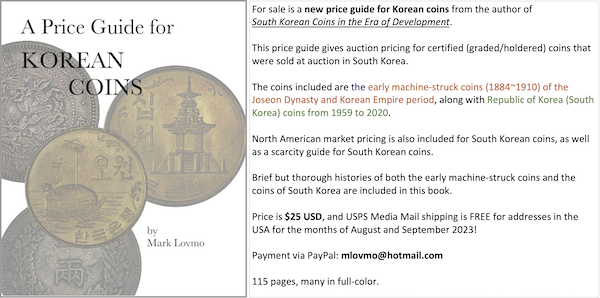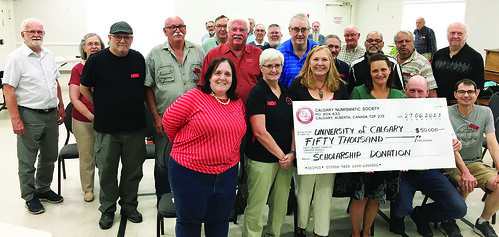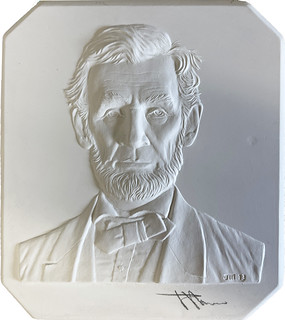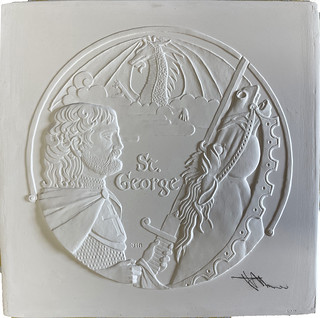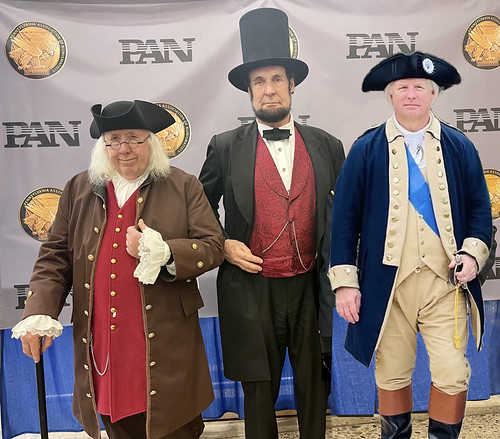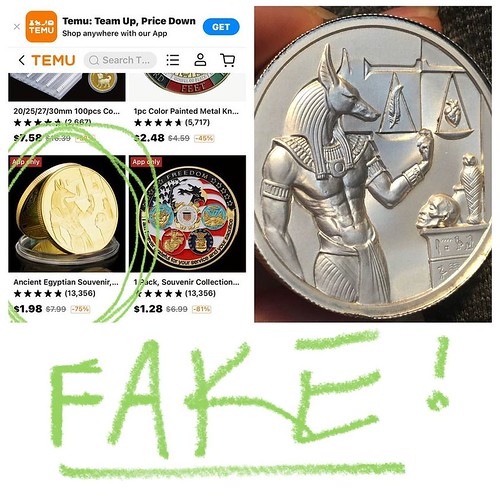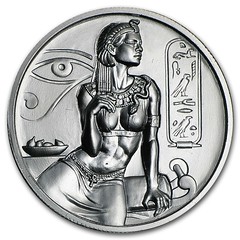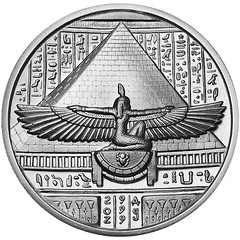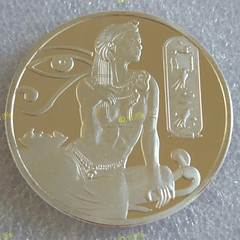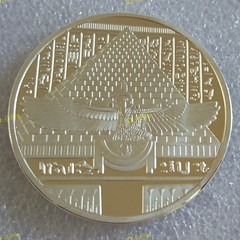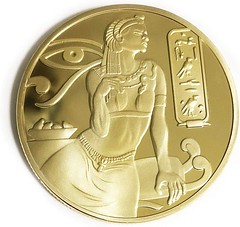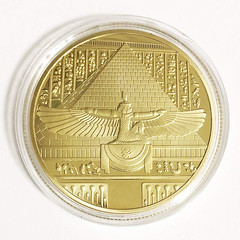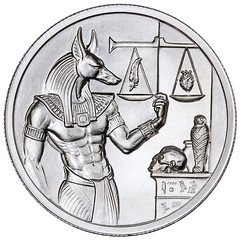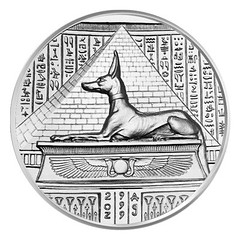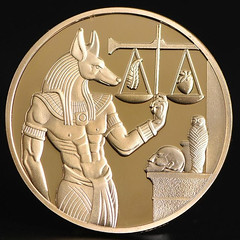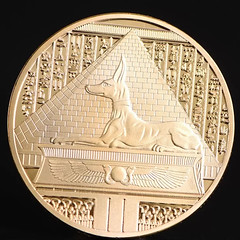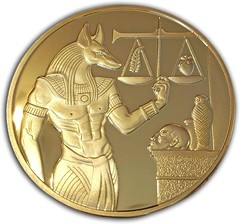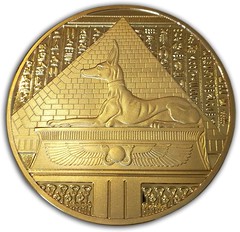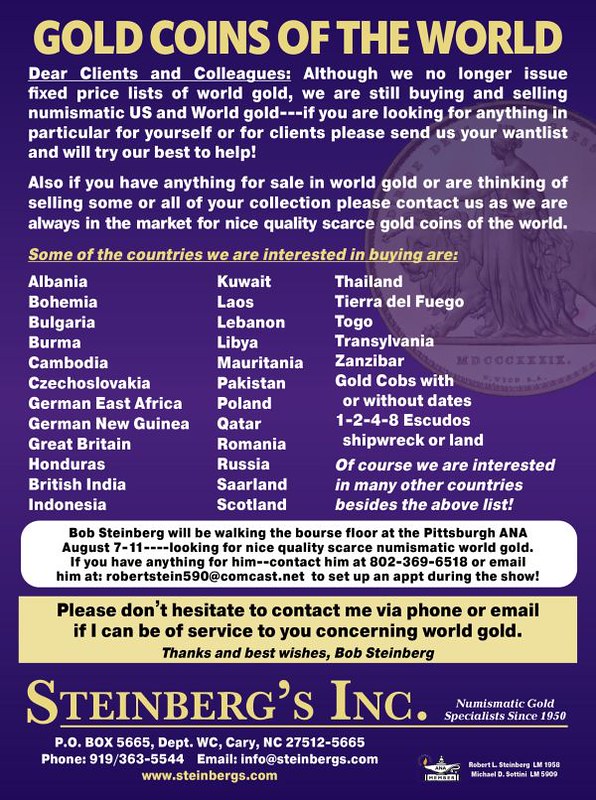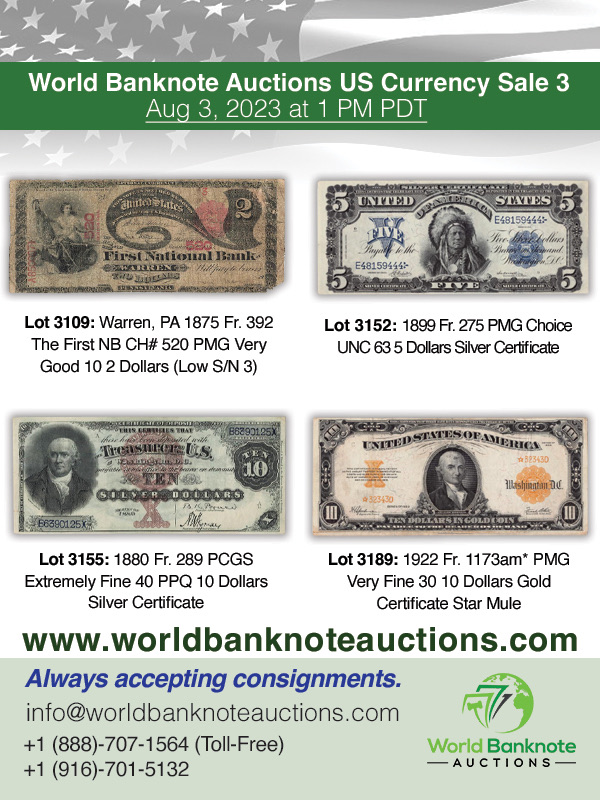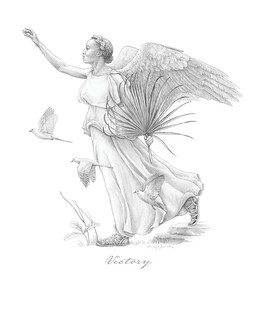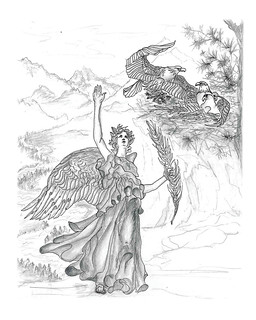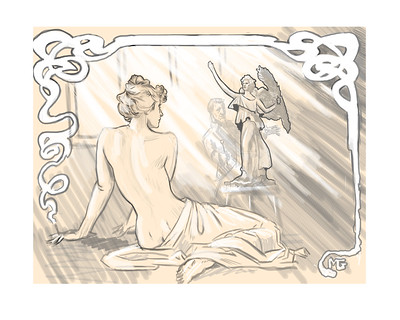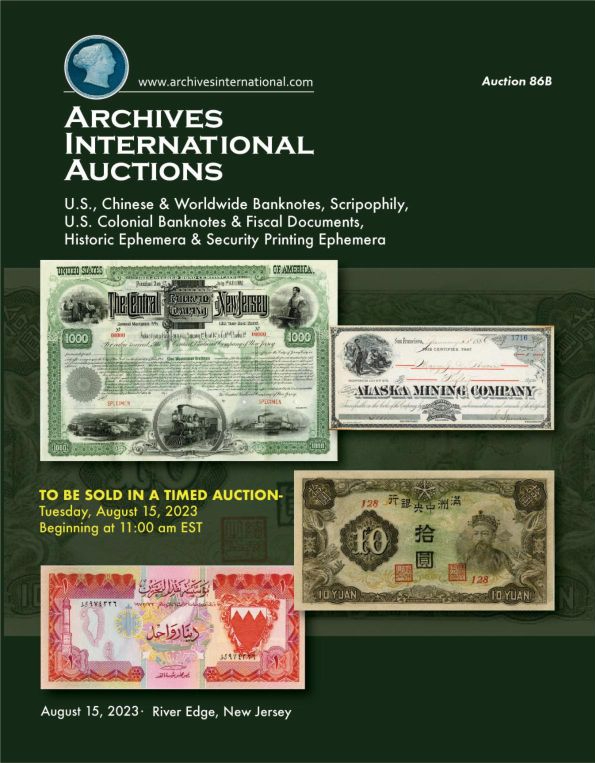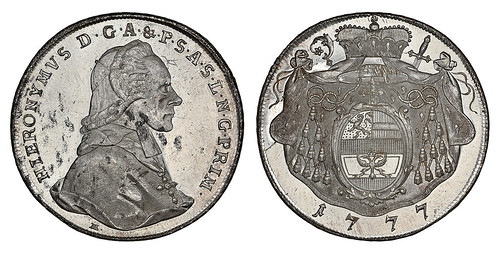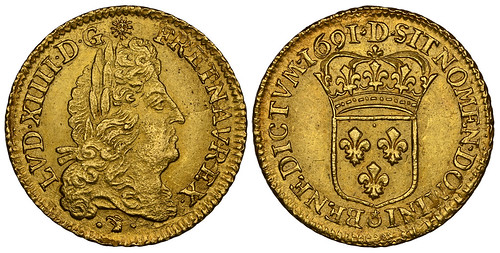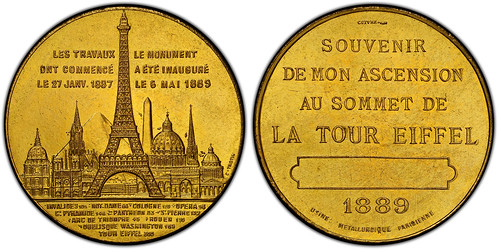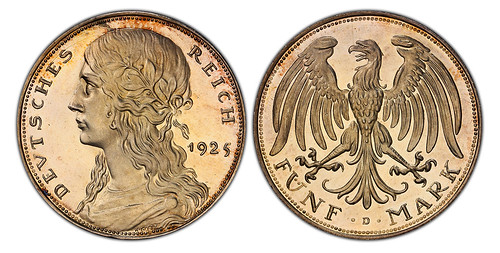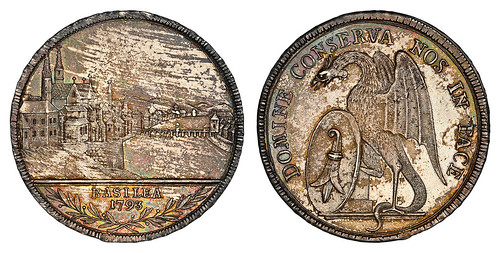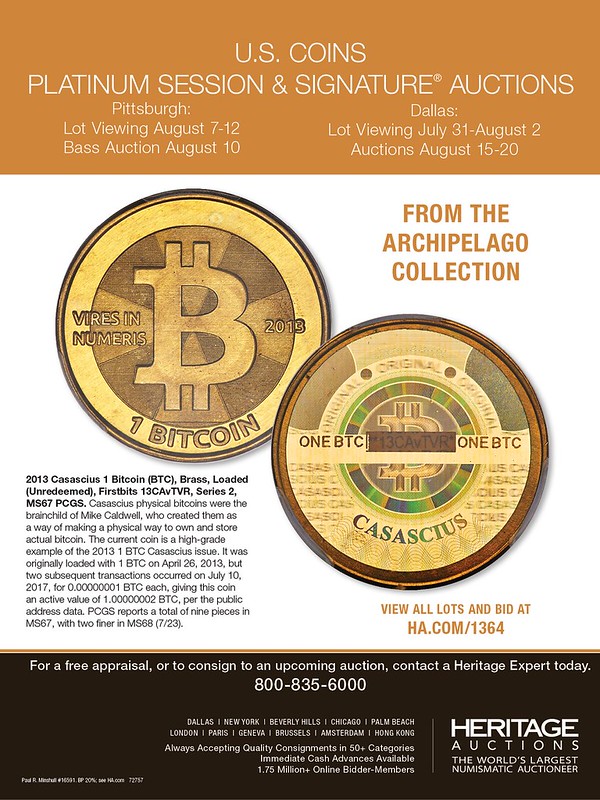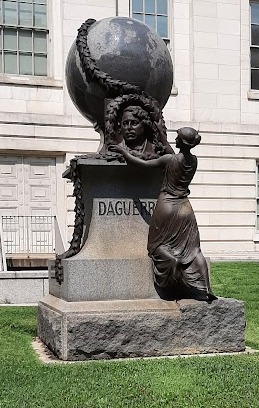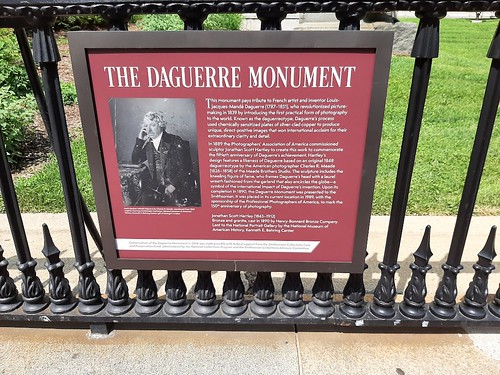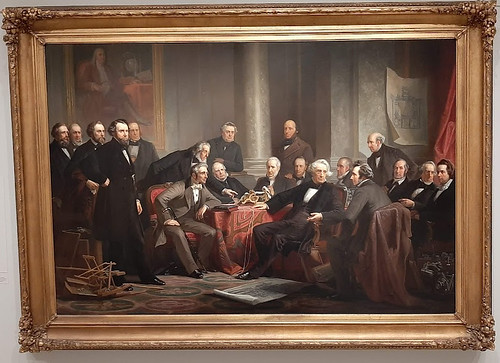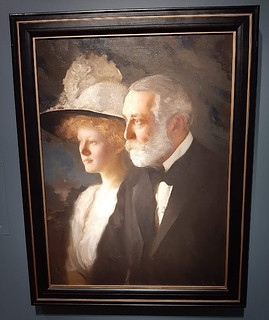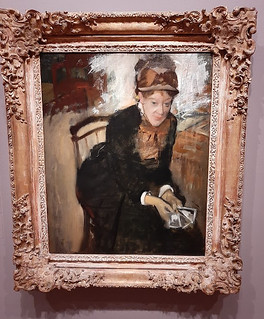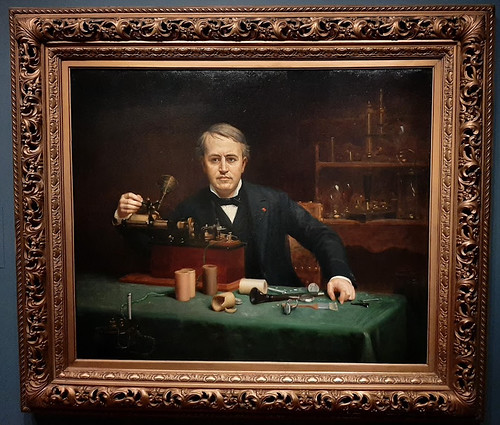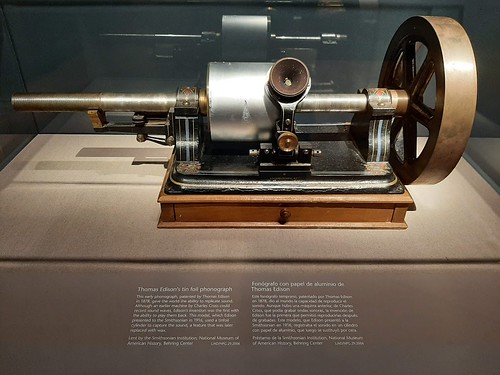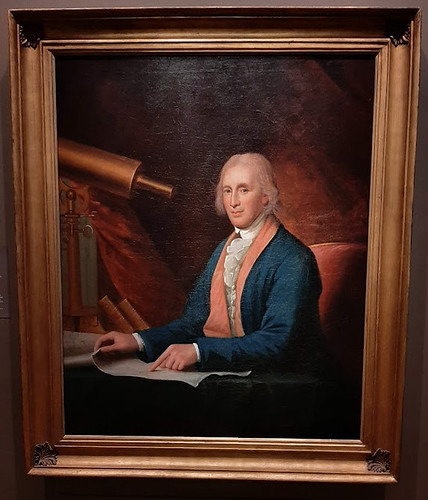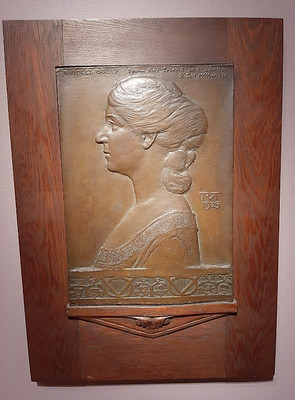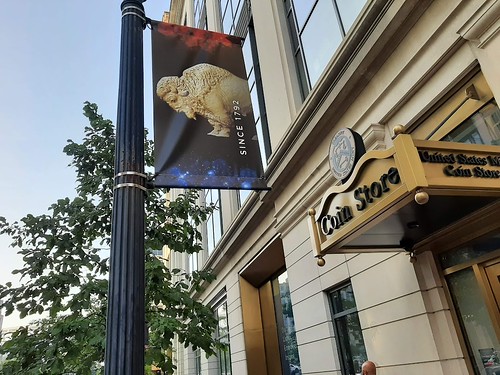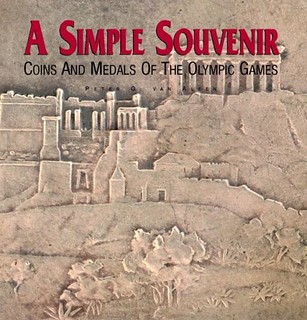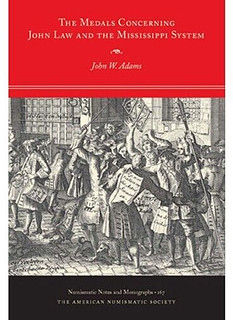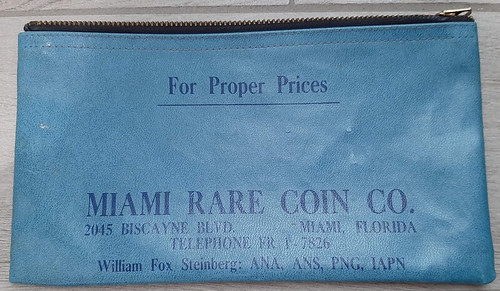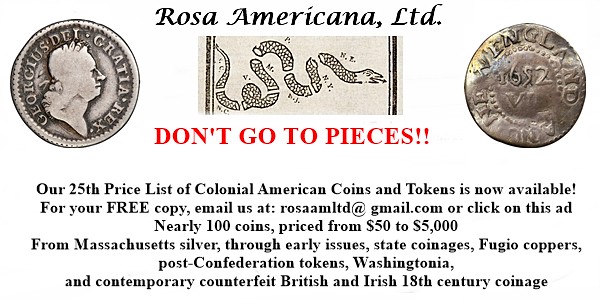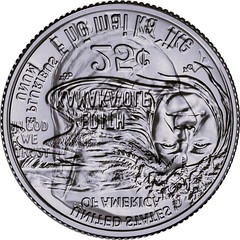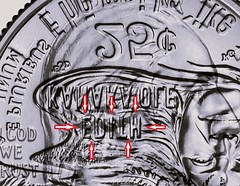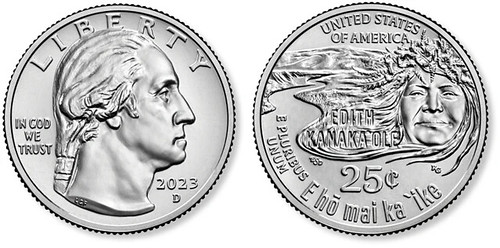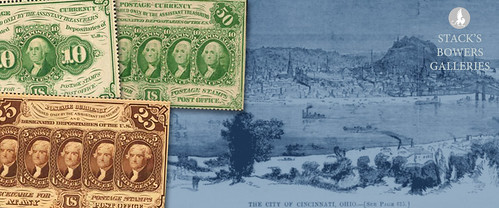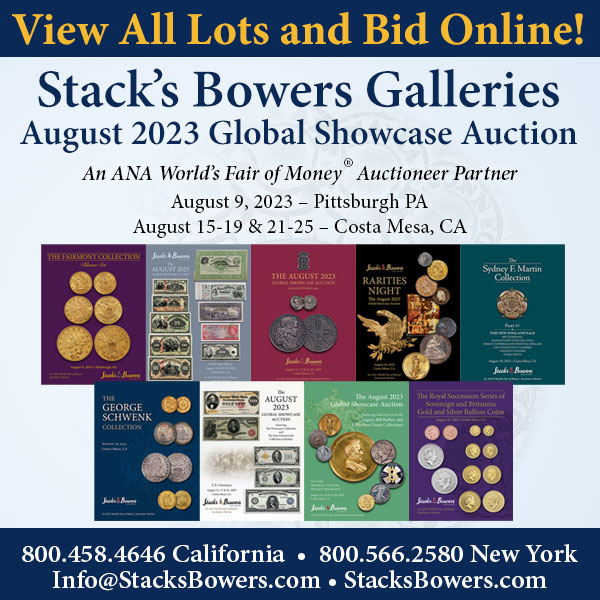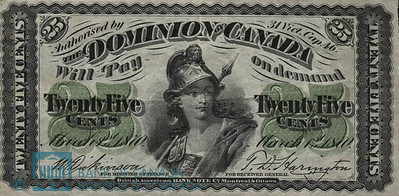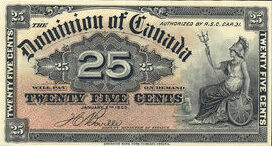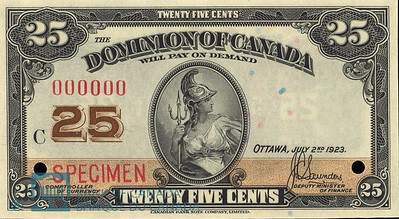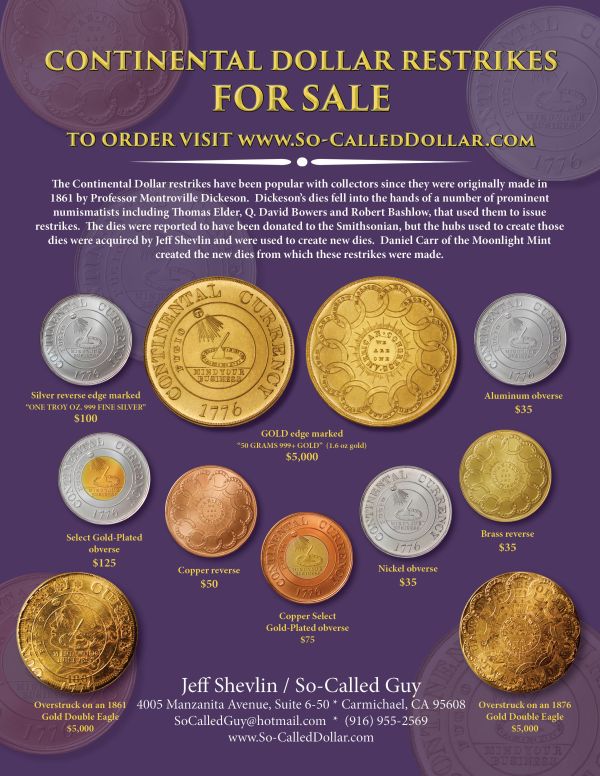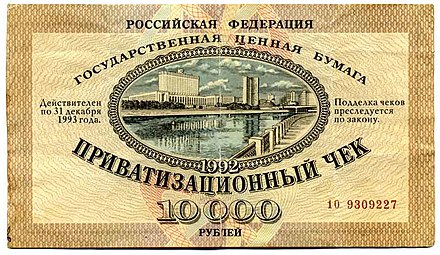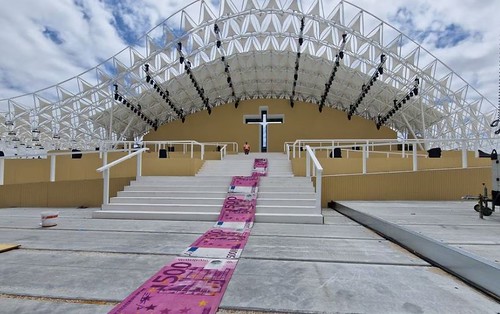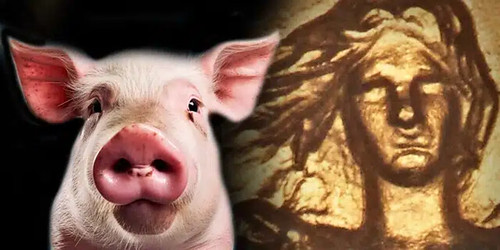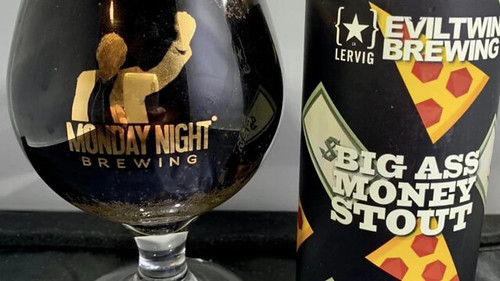
Visit our NBS Sponsors




About UsThe Numismatic Bibliomania Society is a non-profit association devoted to the study and enjoyment of numismatic literature. For more information please see our web site at coinbooks.org SubscriptionsThose wishing to become new E-Sylum subscribers (or wishing to Unsubscribe) can go to the following web page link MembershipThere is a membership application available on the web site Membership Application To join, print the application and return it with your check to the address printed on the application. Print/Digital membership is $40 to addresses in the U.S., and $60 elsewhere. A digital-only membership is available for $25. For those without web access, write to: Charles Heck, Treasurer AsylumFor Asylum mailing address changes and other membership questions, contact Chuck at this email address: treasurer@coinbooks.org SubmissionsTo submit items for publication in The E-Sylum, write to the Editor at this address: whomren@gmail.com BUY THE BOOK BEFORE THE COIN |
- WAYNE'S WORDS: THE E-SYLUM JULY 30, 2023
- NBS BIBLIOTALK PODCAST WITH DARYL ATCHISON
- NBS BOOKBINDING DEMO: CASE BINDING
- NEW BOOK: PRICE GUIDE FOR KOREAN COINS
- NEW BOOK: SWISS TOKENS
- NEW BOOK: SAFEGUARDING HISTORY
- BOOK REVIEW: U.S. TREASURY NOTES, 1812-1865
- FREDERIC DROULERS (1943-2023)
- NNP: AN UNPUBLISHED
VERMONT ENIGMA
PLATE - VIDEO: EARLY AMERICAN COPPERS
- MORE ON THE GIRL ON THE QUARTER
- MORE ON THE 1976 GOLD LIBERTAS AMERICANAS
- NOTES FROM E-SYLUM READERS: JULY 30, 2023
- UNIVERSITY OF CALGARY NUMISMATIC SCHOLARSHIP
- JOHN MERCANTI PLASTER SCULPTS OFFERED
- FAKE MEDALS PROLIFERATING ONLINE
- VOCABULARY TERM: NICKEL
- BARNEY BLUESTONE (1888-1956)
- MIKE DIAMOND INTERVIEW, PART TWO
- ANA NUMISMATIST OF THE YEAR AWARDS
- ANA CLAIN-STEFANELLI AND MEDAL OF MERIT AWARDS
- EXHIBITS AT THE 2023 PITTSBURGH ANA
- SAINT-GAUDENS DOUBLE EAGLES AT ANA SHOW
- MINT ARTIST SAINT-GAUDENS
VICTORY
PRINTS - ATLAS NUMISMATICS SELECTIONS: JULY 30, 2023
- WAYNE'S NUMISMATIC DIARY: JULY 30, 2023
- REVOLT-ERA HALF-SHEKEL FOUND
- KANAKA‘OLE QUARTER CLASHED DIE VARIETY
- THE 1862 POSTAGE CURRENCY RIOT
- CANADA'S FRACTIONAL CURRENCY
- 1992 RUSSIAN PRIVATIZATION VOUCHERS
- THE POPE'S PORTUGUESE BANKNOTE CARPET
- THE BARNES & NOBLE BOOKSTORE REVAMP
- LOOSE CHANGE: JULY 30, 2023
Click here to read the thin version on the web
Click here to subscribe
Click here to access the complete archive
To comment or submit articles, reply to whomren@gmail.com
Content presented in The E-Sylum is not necessarily researched or independently fact-checked, and views expressed do not necessarily represent those of the Numismatic Bibliomania Society.
WAYNE'S WORDS: THE E-SYLUM JULY 30, 2023
 New subscribers this week include:
Tom Cooper, courtesy Al Raddi.
Welcome aboard! We now have 8,047 subscribers.
New subscribers this week include:
Tom Cooper, courtesy Al Raddi.
Welcome aboard! We now have 8,047 subscribers.
Thank you for reading The E-Sylum. If you enjoy it, please send me the email addresses of friends you think may enjoy it as well and I'll send them a subscription. Contact me at whomren@gmail.com anytime regarding your subscription, or questions, comments or suggestions about our content.
This week we open with updates from the Numismatic Bibliomania Society, three new books, a book review, updates from the Newman Numismatic Portal, and more.
Other topics this week include Korean coins and Swiss tokens, the Libertas Americana medal, online fakes, Barney Bluestone, Mike Diamond, Ken Rendell, Barbara Gregory, Pittsburgh ANA events, fixed-price offerings, the 1862 Postage Currency riot, and the Pope's banknote carpet.
To learn more about the Canadian Numismatic Bibliography, the Vermont Enigma, the Van Wart Andre Captured medal, colonial paper money's slavery connection, the Roman Coin restaurant, The Salt City Coin Book, Ice Worm Cocktails, the Miami Rare Coin Co., Russian privatization vouchers, and the "pretty damn tasty" beer made with money, read on. Have a great week, everyone!
Wayne Homren
Respected Knight of the Sacred Order of The E-Sylum
(as a reader referred to me this week)
NBS BIBLIOTALK PODCAST WITH DARYL ATCHISON
The latest episode of the Numismatic Bibliomania Society podcast is now available for listening. It's on the NBS web site but also available elsewhere. Incoming President Len Augsburger provided this report. -Editor
NBS Podcast Features Daryl Atchison
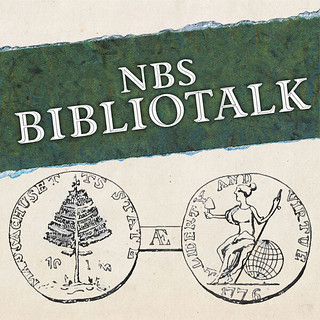 The latest episode of the NBS Bibliotalk podcast,
The latest episode of the NBS Bibliotalk podcast, The Canadian Numismatic Bibliography, with Daryl Atchison
is now available on the NBS website and other popular podcasting platforms such as Buzzsprout. In this episode, Daryl Atchison speaks about his beginning as a collector, and talks in-depth about the Canadian numismatic bibliography, a massive group effort that extended from three years to twelve. The final product was a two-volume set, numbering over 1,200 pages. The NBS podcast is produced every other month by Lianna Spurrier of Numismatic Marketing.
Link to The Canadian Numismatic Bibliography, with Daryl Atchison
on the NBS podcast page::
https://www.coinbooks.org/resources/podcast.html
Link to The Canadian Numismatic Bibliography two-volume set for sale:
http://greenefrogge.ca/?page_id=27
NBS BOOKBINDING DEMO: CASE BINDING
The Numismatic Bibliomania Society table at this summer's American Numismatic Association World's Fair of Money® will feature a special live bookbinding demonstration. Len Augsburger submitted this update. -Editor
Bookbinders Unite at the ANA Convention
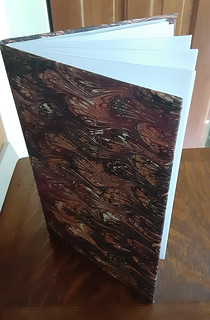 Our bookbinding term of the week is case binding. In this process, multiple signatures are sewn together prior to being
Our bookbinding term of the week is case binding. In this process, multiple signatures are sewn together prior to being cased.
The sewn text block is then attached, via the endpapers, to the cover or case,
which is made of cardboard covered with paper, cloth, or leather.
In our bookbinding demonstration at the ANA, we will sew and case bind a simple example (the Asylum index for 2013-2022), which is illustrated here. This demo will run all day Wednesday, August 9 at the NBS booth, table 433.
To read the earlier E-Sylum article, see:
NBS BOOKBINDING DEMO: MARBLED PAPER
(https://www.coinbooks.org/v26/esylum_v26n30a02.html)
NEW BOOK: PRICE GUIDE FOR KOREAN COINS
Mark Lovmo has published a new price guide for Korean coins. -Editor
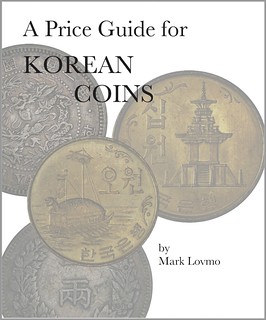 For sale is a new price guide for Korean coins from the author of South Korean Coins in the Era of Development.
For sale is a new price guide for Korean coins from the author of South Korean Coins in the Era of Development.
This price guide gives auction pricing for certified (graded/holdered) coins that were sold at auction in South Korea. The coins included are the early machine-struck coins (1884~1910) of the Joseon Dynasty and Korean Empire period, along with Republic of Korea (South Korea) coins from 1959 to 2020.
North American market pricing is also included for South Korean coins, as well as a scarcity guide for South Korean coins.
The Korean auction hammer prices for all of these coins date from 2019 to 2023, but some results are from auctions that took place in earlier years, especially for those rarer coins that do not appear often at auction in Korea.
Short but thorough histories of both the early machine-struck coins and the coins of South Korea are included in this book.
Price is $25 USD and USPS Media Mail shipping is FREE for addresses in the USA!
Payment via PayPal: mlovmo@hotmail.com (please use Family/Friends)
The book is 115 pages in length, in full color.
This is a LIMITED printing so get yours now!
Other Publications by Mark Lovmo:
South Korean Coins in the Era of Development
- CoinWeek Online (2015 ~ 2017).
- COINage Magazine (Vol. 53, February 2017)
- Journal of East Asian Numismatics (Issue 25 August 2017; Issue 32 May 2019; Issue 35 January 2020; Issue 37 July 2020).
- International Journal of Korean History (Vol. 4, August 2003)
- The Royal Asiatic Society (Korea Branch) Transactions (Vol. 78, 2003)
To watch a video preview of this book, see:
Korean Coin Price Guide
(https://www.youtube.com/watch?v=Dlmz6ZpLs4g)
For more information, or to order, see:
https://dokdo-research.com/Price%20Guide.html
NEW BOOK: SWISS TOKENS
Yosef Sa'ar writes:
"Battenberg Verlag has recently published a fine new catalog of Swiss tokens by Dr. Reudi Kunzmann. The book is in German with hundreds of good photos."
Thank you! Here's information from the publisher's site. -Editor
Ruedi Kunzmann
Swiss consumer money, beer stamps, milk stamps, tram stamps
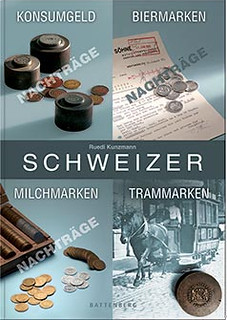 Title: Battenberg Verlag
Title: Battenberg Verlag
ISBN: 978-3-86646-242-7
Edition: 1st edition 2023
Dimensions: 14.8x21cm
Type of figures: colored throughout
Type of cover: hard cover
Number of pages: 392
Without the author's extensive research into Switzerland's chips, the monetary history of the country in the heart of Europe would be a lot poorer. With meticulousness and years of probing for the sometimes extremely rare coins, the author has now put together a supplementary book on the three topics of Swiss consumer money, Swiss beer stamps and Swiss milk stamps, which contains a large number of newly discovered tokens - a total of 880 numbers. As usual, the interested person often finds various background information, which is otherwise difficult to find. As an additional chapter, Ruedi Kunzmann added a list of tram brands in Switzerland. The worldwide collectors of these special coins will thank him.
For more information, or to order, see:
Swiss consumer money, beer stamps, milk stamps, tram stamps
(https://www.battenberg-gietl.de/produkt/schweizer-konsumgeld-biermarken-milchmarken-trammarken)
NEW BOOK: SAFEGUARDING HISTORY
Whitman has published a new autobiography of dealer Kenneth W. Rendell, who started out as a coin dealer in the 1950s and 60s and later gravitated to the world of autographs and other historical artifacts. Here's the announcement. -Editor
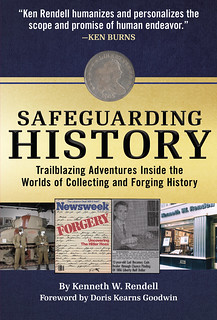 Whitman Publishing announces the release of Safeguarding History, the autobiography of famed artifacts collector and dealer Kenneth W. Rendell. Subtitled Trailblazing Adventures Inside the Worlds of Collecting and Forging History, the 328-page memoir of the
Whitman Publishing announces the release of Safeguarding History, the autobiography of famed artifacts collector and dealer Kenneth W. Rendell. Subtitled Trailblazing Adventures Inside the Worlds of Collecting and Forging History, the 328-page memoir of the Indiana Jones
of the art and collecting world will debut nationwide on October 3, 2023.
Rendell has spent decades adventuring around the globe to track down, buy, and sell some of the most significant, iconic historical artifacts from the ancient world to the Renaissance to the present day. He is known as a collector and dealer in rare manuscripts and historical artifacts and an expert in autographs—he debunked the Hitler Diaries in the 1980s, helped solve the Mormon Church White Salamander Letter
murders, and exposed the so-called Jack the Ripper diary as a fraud. Rendell built the incredible collection of Bill and Melinda Gates's personal library, and has appraised, bought, and sold major archives including Richard Nixon's White House papers and Watergate tapes, Ronald Reagan's papers, Frederick Law Olmsted's papers, General George Patton's personal artifacts, 12 million uncataloged artifacts of the Northern Pacific Railroad, and many others.
Rendell is also known as the founder and creator of the International Museum of World War II and is an expert in that field, in particular on the Home Front, black ops and propaganda, spying, and the experiences of everyday soldiers and service members. His book World War II: Saving the Reality (Whitman Publishing, 2009) was called as magnificent and important as his museum
by the OSS Society Journal.
Safeguarding History explores Rendell's start as a prodigy coin dealer in his teens in the 1950s and early 1960s. His friendship with Q. David Bowers, Kenneth Bressett, Walter Breen, Grover Criswell, George Fuld, and other peers of that era led to the founding of the Rittenhouse Society and other collaborations. The first chapters of his memoir tell of Rendell's adventures hunting down coins in the Caribbean and Europe, and interacting with dealers, collectors, and researchers like Malcolm O.E. Chell-Frost, Doyle DeWitt, the Norwebs, Spink, Seaby, Abe Kosoff, Jim Ruddy, and many others.
Rendell shares personal stories about Malcolm Forbes, Clint Eastwood, Tom Hanks, various Supreme Court justices, Patti Reagan, Otto Kerner, Bill Gates, John Eisenhower, Ted Kennedy, Harry Truman (whom he drove cross-country to meet at the age of 20), and many other characters and personalities in the worlds of American history, rare books, and collectibles.
His memoir is also a personal reflection on what it takes to succeed in business and in life, and to overcome challenges. Doris Kearns Goodwin, in the book's foreword, calls Rendell a master storyteller. How lucky we are to share in Rendell's passion,
she writes, to savor the moments he comes upon breathtaking documents and letters. We meet a cast of intriguing characters and are privy to an inside look at the complex world of collecting—a world filled with adventures, mysteries, sensational hoaxes, thefts, and even murders.
Balancing his life in antiquities, Rendell is also an impressive sportsman, and he describes how he's combined his unparalleled collecting career with extreme sporting—taking up ski racing in his 30s, extreme helicopter skiing in his 40s, Hawaiian windsurfing in his 50s, and continuing with snowboarding now into his 80s.
Historian Ken Burns calls Ken Rendell one of our greatest collectors of historical artifacts
who humanizes and personalizes the scope and promise of human endeavor.
About the Author
Kenneth W. Rendell, founder and director of the International Museum of World War II, has been a collector and dealer since the 1950s in rare coins, historical letters, documents, and other historical artifacts. His rare-manuscript business, with offices in Boston and a gallery in New York City, encompasses all areas including politics, the law, the military, art, literature, music, science, and others. He has authored the standard reference books in the field, including History Comes to Life.
For Rendell, the field of forgeries and journalistic hoaxes is another major interest. He debunked the infamous Hitler diaries
on behalf of Newsweek Magazine in 1983, and then headed the investigation for Stern Magazine into how the hoax had been perpetrated. For Time Warner he proved the diary of Jack the Ripper was a hoax, and he has been involved in every major forgery case in recent decades. He is the author of Forging History, the standard reference work on the subject. As an expert witness, Rendell has appeared in criminal trials where his expertise and testimony would make a difference, including the trial of the Mormon White Salamander murders.
He received the Justice Department's Distinguished Service Award for his work leading to convictions for thefts from the National Archives and the Library of Congress. He also won the only two Tax Court cases deciding the value of archives without compromise: one for the Internal Revenue Service (the Otto Kerner Papers), the other for the taxpayer (the Northern Pacific Railroad). Another major interest of Rendell's is Western American history. His extensive collection in this field was the basis of his book The Western Pursuit of the American Dream, which the New York Times said succeeds in giving a sense of the struggle to tame the gorgeous wilderness that stretched beyond the tidy civilizations of the east. . . . It's worth spending time with.
Safeguarding History: Trailblazing Adventures Inside the Worlds of Collecting and Forging History
By Kenneth W. Rendell; foreword by Doris Kearns Goodwin.
328 pages, full color.
Hardcover with dustjacket.
ISBN 0794850499.
Retail $24.95.
BOOK REVIEW: U.S. TREASURY NOTES, 1812-1865
Dennis Tucker submitted this review of Nicholas Bruyer's new book on U.S. Treasury Notes. Thank you! -Editor
U.S. Treasury Notes 1812–1865: An Excellent New History Book on a Fascinating American Era
Reviewed by Dennis Tucker, July 2023
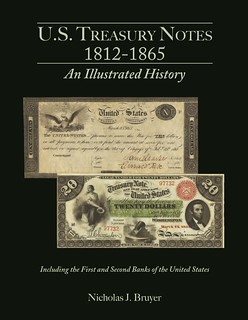 Nicholas J. Bruyer has accomplished a remarkable feat with his beautifully illustrated new history book, U.S. Treasury Notes 1812–1865. Bruyer's work brings fresh understanding to a numismatic subject that is often merely summarized, but which deserves this level of careful attention and creative exposition.
Nicholas J. Bruyer has accomplished a remarkable feat with his beautifully illustrated new history book, U.S. Treasury Notes 1812–1865. Bruyer's work brings fresh understanding to a numismatic subject that is often merely summarized, but which deserves this level of careful attention and creative exposition.
At Whitman Publishing we've explored just the surface of America's Treasury Notes. Chapter 21 of Q. David Bowers's Whitman Encyclopedia of U.S. Paper Money gives a nine-page overview of the subject. In Arthur and Ira Friedberg's Guide Book of United States Paper Money there's a six-page section on Treasury Notes of the War of 1812.
The subject is summarized even more briefly with two pages in Kenneth Bressett's popular Guide Book of United States Currency. Various other Whitman books touch lightly on Treasury Notes, often as a precursor to much more in-depth discussion of state-chartered bank notes and later money.
Now, with the assistance of Stack's Bowers Publishing, Nicholas Bruyer has given U.S. Treasury Notes the spotlight they deserve. He presents them in a comprehensive manner, colorfully illustrated and rich in historical narrative. Bruyer explores the use of these notes not only as investment vehicles—employed by the government to stave off bankruptcy—but also as an early form of national currency. U.S. Treasury Notes 1812–1865 is more than a catalog; it's a well-reasoned study that offers new perspectives in American financial and economic history.
It's true that for many of these notes fewer than a half dozen specimens are known to still exist. But collectors love to learn about interesting specialties, even if the collectibles themselves live mainly in the realm of museum holdings and expensive personal collections. Pattern coins, famous federal super-rarities, private and territorial gold pieces, and other rarefied specialties come to mind. For those hobbyists who are able to actively collect such treasures, enjoy the hunt! Everyone else can immerse themselves in well-written, informative, handsomely illustrated books. Nicholas Bruyer's U.S. Treasury Notes 1812–1865 fills that need very nicely. Because the era of U.S. Treasury Notes, from the War of 1812 through the American Civil War, is so fascinating, Bruyer's book holds great interest for numismatists—those history buffs who study money—but also for everyone who wants a deeper understanding of our nation's early formative decades.
# # #
Book reviewer Dennis Tucker is a life member of the American Numismatic Association, a Fellow of the Academy of Political Science, and secretary pro tem of the Rittenhouse Society. As publisher at Whitman Publishing since 2004, he has worked on hundreds of books on numismatics, banking and economic history, and other nonfiction subjects. He has written about paper money for hobby publications including his column From the Colonel's Desk,
and is the 2013 recipient of the Society of Paper Money Collectors' Forrest Daniel Award for Literary Excellence. Since 2016 Tucker has served the U.S. Treasury Department as the numismatic specialist of the Citizens Coinage Advisory Committee.
Well said. One needn't own an original Monet painting or 1804 Silver Dollar to appreciate their artistry and history. Readers of the book will become educated viewers who understand the importance of these significant artifacts. Yours will not be "the stupid glance of the passer-by." Be sure to stop by the Stack's Bowers Galleries table in Pittsburgh. -Editor
This new title will debut at the upcoming ANA World's Fair of Money convention in Pittsburgh at the Stack's Bowers Galleries table – #1000. In addition, Nick Bruyer will be on hand to meet attendees, talk paper money and personally autograph all copies of his soon to be best seller, offered at a special convention price of $30, a 50% discount to the cover price.
Nick will also have an extraordinary million dollar display of Treasury Notes, from a $1000 note from the War of 1812, to a $50 7.3% "coupon" note issued from 1864 to the end of the Civil War. Also on display will be an unissued specimen of the first and only U.S. $3 note, from 1815; a $50 note from the Panic of 1837; the first "Demand" note ($50) from 1843; the first $5000 note, issued for the Mexican War in 1847; the first note issued for the Civil War, a unique 1861 $50 6% 2-yr note valued at $1 million; a proof $100 coupon-bearing 7.3% note of 1861; and a $100 1864 Compound Interest note.
To read the earlier E-Sylum articles, see:
NEW BOOK: U.S. TREASURY NOTES, 1812-1865
(https://www.coinbooks.org/v26/esylum_v26n29a05.html)
NEW BOOK: U.S. TREASURY NOTES, 1812-1865
(https://www.coinbooks.org/v26/esylum_v26n30a05.html)
FREDERIC DROULERS (1943-2023)
Georges Depeyrot passed along word of the passing of author Frédéric Droulers, a specialist in royal French coinage. Thank you - sorry to hear the news. Georges provided this bibliography of his works. -Editor
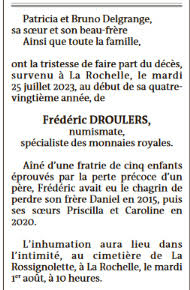 1 - 1978
1 - 1978
[Collection. Merchant catalogs. Numismatics] / Frédéric Droulers
Frederic Droulers
Books
2 - 1978-2001
Gadoury, Victor
French royal coins from Louis XIII to Louis XVI: 1610-1712: copper, billon, silver, gold / Victor Gadoury, Frédéric Droulers
3rd ed. expanded and updated
V. Gadoury
Books
3 - 1989-...
Droulers, Frédéric (1943-....)
Practical encyclopedia of numismatics and royal finances: 1610-1792 / Frédéric Droulers
Ed. Albuquerque
Books
4 - 2012
Droulers, Frédéric (1943-....)
General directory of coins from Louis XIII to Louis XVI: 1610-1793 / Frédéric Droulers
5th ed.
F.Droulers
Books
5 - 1978
Gadoury, Victor
French royal coins from Louis XIII to Louis XVI: 1610-1712: copper, billon, silver, gold / by Victor Gadoury and Frédéric Droulers
V. Gadoury
Books
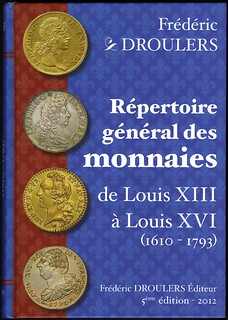 6 - 1980
6 - 1980
Droulers, Frédéric (1943-....)
Treasures of royal coins from Louis XIII to Louis XVI: discovered in France and around the world since the 19th century / Frédéric Droulers
Editions Feydeau numismatics
Books
7 - 1998
Droulers, Frédéric (1943-....)
General directory of coins from Louis XIII to Louis XVI: 1610-1792 / Frédéric Droulers
2nd ed.
French association for the promotion of numismatics
Books
8 - 1991
Droulers, Frédéric (1943-....)
A short history of the European ecu and of previous monetary unions from the middle ages to the present day / Frédéric Droulers and the Ecu banking association, Association for the monetary union of Europe, Center for the advancement and study of the European currency, Commission of the European communities
Aria Creations-Rotopress
Books
9 - 2009
Droulers, Frédéric (1943-....)
General directory of coins from Louis XIII to Louis XVI: 1610-1792 / Frédéric Droulers
4th ed.
Nomis-arts France
Books
10 - 1989
Droulers, Frédéric (1943-....)
Practical encyclopedia of numismatics and royal finances. 1: 1610-1792 / Frédéric Droulers; pref. by Patrice Cahart,...
Ed. Albuquerque
To read the full list of Droulers' publications, see:
https://catalogue.bnf.fr/rechercher.do?
motRecherche=Fr%C3%A9d%C3%A9ric+Droulers&critereRecherche=0
&depart=0&facetteModifiee=ok
NNP: AN UNPUBLISHED VERMONT ENIGMA
PLATE
Newman Numismatic Portal Project Coordinator Len Augsburger provided the following report on a recent addition. -Editor
An Unpublished Vermont Enigma
Plate
Recently the Newman Portal scanned a photographic paste-up plate, from the Eric Newman papers, that was apparently intended for publication with Newman's article A Recently Discovered Coin Solves a Vermont Numismatic Enigma,
from the Centennial Publication of the American Numismatic Society (1958). Although this plate does not include the Enigma
coin, the layout and typography are consistent with those published.
The plate depicts die marriages within the Vermont series and would have provided broader illustrative evidence than was ultimately published. This plate is double-sized, which may have presented publication challenges. Newman's article proposed a punch interlock between the Vermont and counterfeit halfpence series, which explained the unexpected appearance of British insignia on a post-Independence American coin.
In the Winter 2022 C4 Newsletter, Jim Rosen and William Eckberg challenged Newman's proposed punch linking with the use of digital overlays. The two authors concluded that the variance demonstrated in the images was too great to be the result of recutting individual dies.
Image: The Vermont Enigma
coin (1776 Georgivs III Machin's Mills halfpence) from the Newman V sale (Heritage Auctions, November 2014, lot 3030).
Link to Vermont coppers paste-up plate:
https://archive.org/details/Epn0930-1958pasteupphotopl
Link to Centennial Publication of the American Numismatic Society:
https://archive.org/details/centennialpublic1958edit
VIDEO: EARLY AMERICAN COPPERS
The David Lisot Video Library on the Newman Numismatic Portal can be found at:
https://nnp.wustl.edu/library/multimediadetail/522852
We highlight one of his videos each week in The E-Sylum. Here's one from 2007 with Chuck Heck speaking about Early American Coppers. -Editor
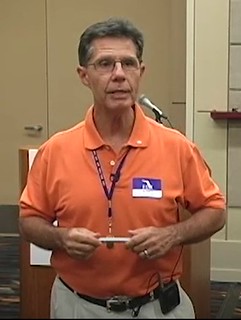 Chuck is a recognized expert on the early copper coinage of the United States. He is a frequent lecturer at coin meetings and shows across America. Chuck's program includes a detailed history of the Colonial issues and early large and half cents. This lecture-with-slides includes:
Chuck is a recognized expert on the early copper coinage of the United States. He is a frequent lecturer at coin meetings and shows across America. Chuck's program includes a detailed history of the Colonial issues and early large and half cents. This lecture-with-slides includes:
- examples of the pre-Federal issues of 1783-1791
- the first issues to say "cent" and "e pluribus unum"
- token issues including those later overstruck by the US government
- the large cents of 1793 including the chain, wreath, and Liberty cap
- an explanation and examples of the evolution of the Liberty design and the men who created them
- design changes in 1808 and 1816
- examples of proof only issues and their scarcity
- half cents and their design changes and rarity
Speaker(s): Charles "Chuck" Heck.
Chuck rocks the orange FUN polo shirt, and he's been serving as the NBS Treasurer since 2019. He knows his coins and recently published a book on 1794 Large Cents. He provides a great overview of the entire colonial and early U.S. copper era. Early in the video numismatic literature dealer Fred Lake is seen taking photos. -Editor
To watch the complete video, see:
https://nnp.wustl.edu/library/book/560282
To read the earlier E-Sylum article, see:
NEW BOOK: DIE STATES OF 1794 LARGE CENTS
(https://www.coinbooks.org/v25/esylum_v25n22a04.html)
MORE ON THE GIRL ON THE QUARTER
Jim Haas passed along a 1917 article about Doris Doscher modeling for the Standing Liberty Quarter. His note arrived a couple weeks ago, but I hadn't been able to get it into an issue until now - sorry for the delay. -Editor
It is interesting to me for a variety of reasons. First off, the photo on the opening page shows Doris in the same pose as the one that appeared in the Brooklyn Daily Eagle that was included in the earlier article. She's clothed in this one. I also liked the coin showing its edge.
 Second, the photos on the last two pages, the first showing MacNeil at his easel working on plasters of two coins. How did I miss this photo?
Second, the photos on the last two pages, the first showing MacNeil at his easel working on plasters of two coins. How did I miss this photo?
I can't help but think they are the Quarter and the Dime even though the caption says otherwise. Could it be a smaller version of the quarter before executing the 14 version? The last page shows Doris in her Red Cross nurse's uniform. The only things missing are her wrist, ankle and calf, so we'll have to leave them to our imaginations.
This is a well-written and fairly comprehensive article, one of the best I've read on the subject, a broad overview of the model, the artist and the coin. A statement at the bottom of page three reads, Then this is done in relief on a medallion 14 inches in diameter. For this work Miss Doscher posed.
Interesting statement that I have to believe is gospel.
"Carol Brooks MacNeil modeled a work titled War Babies of which twenty-five copies were made, plaster I'm pretty sure. Selling for $10.00 and up, all proceeds went to the Red Cross. It was mistakenly attributed to Hermon in a newspaper article. The Poppenhusen Institute has one of those copies."
To read the earlier E-Sylum article, see:
STANDING LIBERTY QUARTER MODELS
(https://www.coinbooks.org/v26/esylum_v26n28a12.html)
MORE ON THE 1976 GOLD LIBERTAS AMERICANAS
A few weeks back Peter Jones submitted these thoughts on the 1976 Gold Libertas Americana restrikes; I'm sorry to admit these got lost in my email deluge until now, but here goes. Thank you! -Editor
In reference to this week's E-Sylum about the 1976 Paris gold restrikes of the Libertas Americana, I bought a restrike 64 grams proof gold Libertas Americana Gold medal in June 2022 at the Stacks Bowers precious metals auction.
I bought is because, of all the Comitia Americana medals, this was the one Franklin was most proud of. As Adams and Bentley called it: "Simply put, a masterpiece." He spent an enormous amount of time and effort to get the message correct.
Rather than creating a monumental pillar for Yorktown, then in vogue, Franklin created a medal. As a diplomat, he knew Louis XVI would appreciate a gold masterpiece in his hands lots more than a marble column in America.
Franklin suggested the infant Hercules in a cradle, strangling two serpents sent by Hera, and a personification of France as Athena (Minerva in Rome). The fresco painter Esprit-Antoine Gibelin (who had a background in classical themes) and the engraver, Augustin Dupré, developed the designs further. Dupré did not finish the engraving until 1782. He lived, like Franklin, in Passy. He and Franklin often walked the three miles into Paris together, Dupré no doubt charmed by his wit and intellect.
Franklin focused on the reverse. The reverse shows France as Athena, carrying a shield with three fleurs-de-lys. She protects the infant Hercules (representing America) on his cradle. Hercules strangles two snakes, as the lioness Britannia pounces on him. The two strangled serpents symbolize the battles of Saratoga and Yorktown. In the exergue are the twin dates 17 October 1777 and 19 October 1781. The first date was the defeat of Burgoyne at the Battle of Saratoga. The second was the defeat of Cornwallis at the Battle of Yorktown. Importantly, the lioness has her tail between her legs, styled coward
by heraldic experts. It shows her power is foiled by Minerva (France). Athena was Goddess of War in ancient Greece, and Goddess of Prudence in Rome.
Zeus, the god of the sky and thunder, ruled as king of the gods on Mount Olympus. To say Zeus' life was busy was an understatement: he fathered fifteen children! The infant Hercules, son of Zeus and Alcmene, made one of Zeus's wives, Hera, so jealous that she sent two enormous serpents to kill him. The infant Hercules strangled both of them.
The legend around, NON SINE DIIS ANIMOSUS INFANS, is Latin for the bold infant is not without divine aid.
Above the reverse exergual line is DUPRE.F. for Dupré Fecit, Latin for Dupré made it.
The Libertas Americana reverse flatters France, just as Franklin, the ever consummate ambassador, intended. He still needed French loans for America!
Although Franklin said he presented two gold examples to King Louis XVI and his wife in 1783, these are unknown today. Gold proof restrikes are the only link to show what Louis XVI and Marie Antoinette actually held in their hands after years of Franklin's plans.
The Paris Mint struck originals in March, April and June 1783 and possibly at a later date in 1783. None of them have edge markings. In 1789 Jefferson bought a silver specimen from the Paris Mint, perhaps to give Washington.
In 1783, Franklin paid 3,704 livres ($617 or £154) of his own money to buy these medals.. He also ordered 300 copies of a four-page pamphlet, Explanation of the medal
. As he always had a printing press with him and loved to print documents, it is surprising that he did not print the document himself. But he wanted something better. It included beautifully engraved pictures of the medal.
This is Franklin's own explanation, mostly focusing on the reverse. Translated into English, the French document reads:
The Head representing American Liberty has its tresses floating in the air, to shew that she is in activity. The Cap carried on a Spear is her Ensign. The Date below of 4 July 1776 was the day the United States declared Independence.
On the reverse, the United States are represented by an infant Hercules, cradled in a shield which in Theocritus served as a cradle, strangling two serpents in his hands, an emblem of the two English armies made prisoners at Saratoga and at York Town. A leopard representing England throws himself at the same time on the infant. A Minerva armed with a shield with the arms of France comes to his rescue and characterizes the generous protection that the King has given to America.
The legend is a verse from Horace, of which the sense is: It is not without help from the Gods that the infant shows this courage.
The two dates of 17 October 1777 and of 19 of the same month 1781 indicate the two surrenders of Burgoyne and of Cornwallis.
This medal is destined to be a lasting monument of events shown on the design, as well as of the recognition of the United States towards their grand and generous Benefactor.
Philippe Denis Pierres delivered 300 copies of the Explanation
(Explication de la Médaille
in French) to Franklin on May 5, 1783. There can be no doubt reading this in French that Franklin was oiling diplomatic wheels. Robert Livingston, Secretary of Foreign Affairs of the Confederation Congress, had written to Franklin in December 1781 suggesting a commemorative pillar in Yorktown. But cognizant of further support needed from France, Franklin's titled his explanation, Explanation of the medal struck by the Americans
. Of course, the Americans did not strike it. He did! But he wanted to make France think America was officially grateful for its efforts. He knew Congress might not vote on the money or the project. So, he paid for it himself. Notice that his explanation of Liberty was very sparse.
Franklin's pinnacle was to present the medals in gold to Louis XVI and Marie Antoinette. Gold restrikes are the only facsimile of what the medal would have looked like.
To me this is an important collector item.
To read the earlier E-Sylum article, see:
NOTES FROM E-SYLUM READERS: JULY 9, 2023 :
1976 Gold Libertas Americana Restrikes
(https://www.coinbooks.org/v26/esylum_v26n28a13.html)
NOTES FROM E-SYLUM READERS: JULY 30, 2023
More on the Van Wart Andre Captured Medal
Julia Casey writes:
"Wow!! I have been tracing that Van Wart Andre Captured medal for months! I'm so happy it is going to the NYS Museum where I will try to see it. I found the woman who had it and wrote to one of her family members but I never heard back."
Julia provided the above newspaper article from February 20, 1990 where donor Rae Faith Robinson is shown with her great-great-great-grandfather's medal. Thanks! Below is the medal, now at the New York State museum. -Editor
To read the earlier E-Sylum article, see:
MUSEUM ACQUIRES VINCIT AMOR PATRIAE MEDAL
(https://www.coinbooks.org/v26/esylum_v26n30a12.html)
All the Coins of Pompey the Great
Non-ancient numismatist Roger Burdette writes:
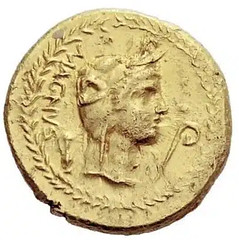
"Regarding "The Ancient Coins of Pompey the Great," great article, but I'm waiting for "The Modern Coins of Pompey the Great."
Don't hold your breath! -Editor
To read the earlier E-Sylum article, see:
THE ANCIENT COINS OF POMPEY THE GREAT
(https://www.coinbooks.org/v26/esylum_v26n30a29.html)
More on Tassie Coin Impressions
Regarding Don Goddeau's question about the coin impressions of James and William Tassie,
Hadrien Rambach writes:
"I had attempted myself to study the question of Tassie & coins a few months ago: well done for finding so much, including pictures.
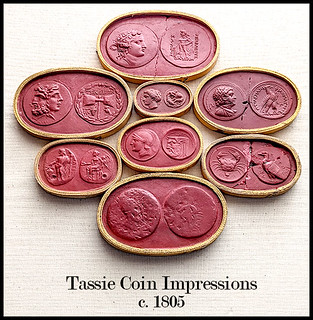 "My interest had been awakened by the reading of John Gray, James and William Tassie : a biographical and critical sketch with a catalogue of their portrait medallions of modern personages, Edinburgh 1894, pp. 29-30 (264 impressions of Cufic coins) and p. 51 (« William Tassie added largely to his uncle's collection of reproductions of gems and medals »). I got in touch with a curator of the Scottish National Portrait Gallery, but unfortunately she was unable to provide any help, though Tassie's collection is likely kept at the National Galleries Scotland. Maybe you'll have more success than me if you try again ?
"My interest had been awakened by the reading of John Gray, James and William Tassie : a biographical and critical sketch with a catalogue of their portrait medallions of modern personages, Edinburgh 1894, pp. 29-30 (264 impressions of Cufic coins) and p. 51 (« William Tassie added largely to his uncle's collection of reproductions of gems and medals »). I got in touch with a curator of the Scottish National Portrait Gallery, but unfortunately she was unable to provide any help, though Tassie's collection is likely kept at the National Galleries Scotland. Maybe you'll have more success than me if you try again ?
"Scans of Tassie's casts would be a precious element for provenance-research and the history of collecting !"
Daniel Fearon writes:
"The Beasley archives have posted photographs of the collection of plaster impressions of Tassie seals and copies of ancient gems, etc., They are laid out an numbered according to Raspe's catalogue "A Descriptive Catalogue of a General Collection of Ancient and Modern Engraved Gems Cameos as well as Intaglios, published in London by J. Murray in 1791. Rudolf Erich Raspe was also the author of - and better remembered for - Baron Munchausen's Narrative of his Marvellous Travels and Campaigns in Russia.
Anyway the website link is:
https://www.beazley.ox.ac.uk/XDB/ASP/browseGemsPlates.asp.
This will give Don access to some 14,000 images on 477 plates. And, better still, if he can find what he wants in the plates he can go to Antiquarian Books - Tassie
and search for the item number and get Raspe's text.
If, after all that, Don has some spare time, an up-date on the works of James and William Tassie is long overdue!"
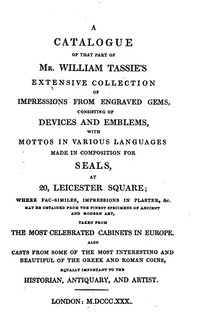
Interesting - thanks, everyone. Don's E-Sylum submission linked to his full article on the topic - the direct link is included below. He was aware of the Beasley archives and publications in 1791, 1830 and 1894, and that many of the Tassie coin impressions were of specimens now at the Hunterian Museum in Glasgow and was already planning a visit there in the fall. -Editor
To read Don's full article on the Engraved Gems site, see:
Coin Impressions by Tassie
(https://engravedgem.com/coin-impressions-by-tassie/)
To read the earlier E-Sylum article, see:
TASSIE COIN IMPRESSIONS
(https://www.coinbooks.org/v26/esylum_v26n30a16.html)
Prussian Piece and Adult Movie Token Book Help Sought
"I would appreciate help from our group. I believe this was struck at the Prussian mint, 188?. The obverse was engraved by Kullrich, father and son were both engravers at this mint. The reverse by E. Weigand, also an engraver there. What was it used for and date?
"On something different - someone was doing a book/pamphlet on tokens used at adult movie houses. Was this ever done? Anyone have a copy they would like to sell?"
Hmmm. I'd remember such a book, so I don't believe one was published. But sometimes I'm the last to know such things. Can anyone help with the book or Prussian mint piece? Thanks. -Editor
Colonial Paper Money's Slavery Connection
E-Sylum advertiser Steve writes:
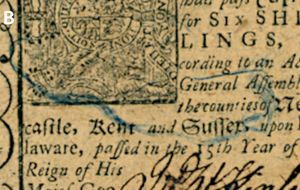 "As a dealer in Colonial/Continental currency I've often thought of the contribution of African American slaves to the production of money in these times (such as cotton in the high rag content base on which these bills of credit, bonds etc were printed). In the Benjamin Franklin article it was mentioned that "The blue threads in their bills were dyed with indigo, a plant-based pigment". In visiting the Kingsley plantation in Jacksonville, FL (where the plant grows wild) one is immediately struck by the fact if it were not for slaves, American indigo could never have been produced, due to the brutal conditions of the process (the overwhelming stench & hordes of bugs attracted to the rotting plants etc)."
"As a dealer in Colonial/Continental currency I've often thought of the contribution of African American slaves to the production of money in these times (such as cotton in the high rag content base on which these bills of credit, bonds etc were printed). In the Benjamin Franklin article it was mentioned that "The blue threads in their bills were dyed with indigo, a plant-based pigment". In visiting the Kingsley plantation in Jacksonville, FL (where the plant grows wild) one is immediately struck by the fact if it were not for slaves, American indigo could never have been produced, due to the brutal conditions of the process (the overwhelming stench & hordes of bugs attracted to the rotting plants etc)."
Indeed. Thanks. -Editor
To read the earlier E-Sylum article, see:
BEN FRANKLIN'S MONEY PRINTING TECHNIQUES
(https://www.coinbooks.org/v26/esylum_v26n30a22.html)
Computer-Generated BEP Obama Portrait
Last week we discussed an AI-created coin design.
David Gladfelter writes:
"The Bureau of Engraving and Printing did not say so, but Mike Beck, a BEP plate printer who staffed BEP's exhibit at the 2012 ANA convention in Philadelphia, told me that this official portrait of President Obama was computer generated."
To read the earlier E-Sylum article, see:
PRESSBURG MINT ISSUES AI-DESIGNED BULLION COIN
(https://www.coinbooks.org/v26/esylum_v26n30a30.html)
MyCollect Coin Flip Inserts Group Created
A reader alerted me to the creation of an interest group on the new MyCollect site focused on coin flip inserts. Since I'm into all versions of numismatic ephemera, I'm glad to hear that. Check it out. Here are some contributed images. -Editor
Dealer and Auction House Coin Flip Inserts | MyCollect
Before the age of Slabs, raw coins inserted into an envelope or plastic flip, usually with a branded paper insert. Add your inserts to our group.
To visit the group, see:
https://www.mycollect.com/groups/flipinsert
QUICK QUIZ: Where is this coin-themed restaurant? Image submitted by a reader. -Editor
UNIVERSITY OF CALGARY NUMISMATIC SCHOLARSHIP
The the Calgary Numismatic Society has raised a scholarship fund for students studying numismatics at the University of Calgary. Impressive! -Editor
Students studying numismatics at the University of Calgary will soon benefit from the volunteer commitment of the Calgary Numismatic Society (CNS).
The Calgary club has created a $50,000 scholarship endowment at the university that is designed to make a significant long-term numismatic contribution within the community,
says CNS president Tom Woznow. Knowing that the University of Calgary has the Nickel Galleries museum with large numismatic holdings, we wanted to enhance the study opportunities by providing funding that could be paid out in a bursary, yearly, to a student that might be studying and working within the field of numismatics.
The $50,000 donation is the result of CNS members volunteering their time at local casinos, raising funds for the promotion and appreciation of numismatics.
The funds were raised by club members that work at casinos for two full days and two full nights, which is no small task and requires 22 volunteers from our club to fill all the positions for the two days and nights,
Woznow explains.
The CNS does this every 18 months, as the CNS is on an 18-month funding rotation with the Alberta Gaming Liquor Control Board.
The donation to the University of Calgary was made at a recent club meeting. Surrounded by club members, Woznow presented the donation to university representative Shannon Katusa.
To read the complete article, see:
Calgary club creates scholarship for numismatic studies at U of C
(https://canadiancoinnews.com/calgary-club-creates-scholarship-for-numismatic-studies-at-u-of-c/)
THE BOOK BAZARRE
JOHN MERCANTI PLASTER SCULPTS OFFERED
The Pennsylvania Association of Numismatists will hold a benefit auction of two plaster bas-relief sculpts by John Mercanti. Here's the announcement. -Editor
John Mercanti Plaster Sculpts to be auctioned at PAN Welcome to Pittsburgh
Dinner
Retired U.S. Mint 12th Chief Engraver, John Mercanti, has created two plaster bas-relief sculpts
that will be the highlight of a Benefit Auction to occur on the evening of Tuesday August 8th at
the Welcome to Pittsburgh
dinner to be held during the American Numismatic Association
World's Fair of Money Convention in Pittsburgh, Pennsylvania.
The first sculpt is a beautiful likeness of 16th President of the United States, Abraham Lincoln. It is hand signed by Mr. Mercanti. His work is world-renowned and this piece of Honest Abe is a stunning example of his accomplished talent.
The second item is a bas-relief sculpt of St. George and the Dragon hand signed by Mr. Mercanti. This design was used on 2022 Modern Masters Series, Ascension Island £10 St George & the Dragon silver coin.
The very popular PAN dinner will be held at the popular LeMont Restaurant on Mt. Washington boasts a dynamic view of the City of Pittsburgh skyline. It is open to the public with reservations required. Cost and details can be found on the PAN website www.PANcoins.org or by calling PAN President Tom Uram at 412-418-0783.
Proceeds from the auction will benefit PAN's Living American History Program. Our PAN reenactors, Dennis Boggs as Abe Lincoln, Curt Radabaugh as George Washington, Patrick McBride as Ben Franklin will be present at the dinner with remarks and available for photos, and selfies.
Abe, George and Ben will also be at the David Lawrence Convention Center as part of the ANA's WFOM convention week. They will have their backdrops and props set up at the front right side of the convention hall. The ANA has financially sponsored most of the cost of their combined appearance. Living History donations are always welcome.
If you've never been to a PAN dinner at LeMont, it's a real treat. The view is spectacular, the food is great, and the club organizes memorable events. Highly recommended. -Editor
For more information, or to register or donate, see:
https://pancoins.org/
FAKE MEDALS PROLIFERATING ONLINE
There are fake numismatic products everywhere you turn these days, so be alert. Sculptor Heidi Wastweet reported on Facebook recently that there are many fakes of her great works appearing in the marketplace. Don't be fooled! -Editor
To read the complete Facebook post, see:
https://www.facebook.com/heidi.wastweet/posts/10159520300856845
VOCABULARY TERM: NICKEL
Here's another entry from Dick Johnson's Encyclopedia of Coin and Medal Terminology. -Editor
Nickel. A metallic element, of silver-gray color and often alloyed with copper and other metals for a coinage metal. Numismatic items have been struck in pure nickel, but as such it is very hard and difficult to strike. Coins with high nickel alloy do have one interesting characteristic – they are magnetic (the magnetic quality diminishes with the reduction of nickel in the alloy below 45%, however). Nickel is most useful as an alloy with copper, to form copper-nickel, or with zinc and copper to form nickel-silver. Even as little as 20% nickel in a copper-nickel alloy effects the color: it is gray (from the nickel) to supersede the copper red color. Nickel appears in a wide number of coinage alloys.
Nickel is also widely used in electroplating where it applies a hard, durable briht gray surface, closely resembling silver in an electroplated surface. Nickel was infrequently plated on dieshells in the 1930s for additional hardness when it was known the dieshells would be used a number of times. The Canadian Mint experimented with plating their coining dies with nickel, but ultimately choose chromium as a more satisfactory technique.
Nickel coins. Switzerland, Canada and a few other countries have issued high nickel-content coins. So much, in fact, the coins are magnetic. Also, two each U.S. 1875 and 1876 nickel three cent pieces were struck in pure nickel (which were presented to Joseph Wharton, and since disappeared). Coins of these dates should be tested with a magnet.
Nickel medals. Award medals in pure nickel have been struck for the International Nickel Company but such medals are always low relief attesting to the difficulty of striking or coining a high relief pure nickel medal.
To read the complete entry on the Newman Numismatic Portal, see:
Nickel
(https://nnp.wustl.edu/library/dictionarydetail/516396)
BARNEY BLUESTONE (1888-1956)
E-Sylum Feature Writer and American Numismatic Biographies author Pete Smith submitted this article on dealer Barney Bluestone. Thanks! -Editor
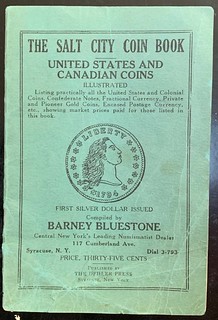 Some weeks I have difficulty coming up with the concept for a story. Some weeks the idea
comes from someone else. The idea this week comes from Mark Borckardt who suggested I look
at the 1930 Census for Barney Bluestone. There are two listings that might be confused.
Some weeks I have difficulty coming up with the concept for a story. Some weeks the idea
comes from someone else. The idea this week comes from Mark Borckardt who suggested I look
at the 1930 Census for Barney Bluestone. There are two listings that might be confused.
The first Barney Bluestone in the 1930 Census was married to Harriet R., age 37, with no children. His age was 41 and born in New York with parents born in Russia. His profession was listed as numismatist. They had a servant, Stella Simienysk, age 18. The Census was taken in Syracuse, New York.
The second Barney Bluestone in the 1930 Census was married to Rebecca with son Leon and daughters Dinah and Natalie. His age was 37 and born in Russia. His profession was proprietor of a hardware store. The Census was taken on Bath Avenue in Brooklyn.
The Social Security Death Index notes that Brooklyn Barney Bluestone was born on July 31, 1893, and died in December 1967.
Mark pointed out that the listing for Bluestone in the Newman Numismatic Portal had information for the Brooklyn Bluestone mixed with that of the Syracuse Bluestone. His observation was correct.
The records I found have many variations with the names and ages. This is a common problem with Census research. Census takers make mistakes in spelling and people lie about their age. The problem is compounded when information is provided by neighbors.
In the 1892 New York State Census. Bernard Blueston, age 3, was living in Syracuse with his father Aaron 38, mother Villa 34, and sisters Ella 5 and Bessie 1.
In the 1900 Census, Barnet Bluestone, age 11, was living with his father Aaron 44, mother Vella 38, and sisters Ella 14, Bessie 9, Rosa 8. Rae 4 and Eva 1. His birth was listed as Jan 1889.
In the 1905 New York State Census, Barney Blueston, age 16, was living in Syracuse with his father, Abraham 48 and mother, Sarah 38, and five siblings Oda 17, Beattie 14, Rose 10. Hilda 8 and Ionia 6.
In the 1910 Census, Bernard Bluestone, age 21, was living with his father, Abraham 52, a Hebrew Minister, his mother, Vera 48, and siblings Ella 23, Bessie 19, Rose 16, Rachel 14 and Lena 12. His occupation was steamfitter.
Barney William Bluestone registered for the draft in 1917. He was born in Syracuse, New York, on January 25, 1888. At the time he was unmarried and living at 613 Jackson. His profession was merchant with his store at 1024 S. Salina Street. By the 1920 Census, at age 31, he was married to Harriet, age 28, and proprietor of a restaurant.
Barney Bluestone was admitted to the ANA as member 2673 on May 1, 1924. His address was 711 Harrison Street in Syracuse, New York. He waited until June 1924 to change his address to 624 Madison Street in Syracuse.
In November 1926 he placed an ad in The Numismatist from 117 Cumberland Avenue, Syracuse. Such ads continued until June 1931.
The Syracuse Journal published this obituary on January 23, 1929.
Rev. Aaron Bluestone, 61,
died last night at his home, 104 Van Buren St., after three years' illness. He was born in Russia
but had lived in this city several years. Surviving are his wife, Mrs. Vellie Bluestone, a son,
Barney William Bluestone and five daughters, Mrs. Henry Anderson of Brooklyn, Mrs. Harry
Barlow of New York, and Mrs. Helen Tanner, and the misses Bettie and Evelyn Bluestone of
Syracuse.
Mrs. Harry Barlow was Rose.
As mentioned earlier, in 1930 he was at 117 Cumberland in Syracuse.
In July 1930 he offered The Salt City Coin Book, first edition. Price was thirty-five cents.
Syracuse was known as Salt City
because of salt springs that were harvested commercially for
salt.
In September 1931 he announced his first coin auction coming up in October or November. Auction business was conducted from 119 Cumberland Avenue.
During 1935-36, the Salt City Coin Co. operated at 167 E. Onondaga Street in partnership with Frank G. Brown.
Barney/Bernard or Harriet/Ida may have been listed in the 1940 Census, but I did not find them.
On April 25, 1942, Bernard William Bluestone registered again for the draft. He had gotten younger with his birthdate as January 25, 1889.
Ads in The Numismatist went quiet for a while but returned with the Albert Grinnell sale of November 1945. During that time he conducted more than 80 auctions. In 1945 he operated at 224 Harrison Street.
Bluestone's 109th auction was dated February 18, 1950. His offering of fixed pricelists ended in May 1950. It was about that time that he retired to Miami.
In the 1950 Census, Barney Bluestone, age 61, was living at the Mayflower Apartments in Syracuse with his wife Harriet A. age 55.
The Miami Herald of April 27, 1956, had his obituary. Bernard Bluestone, a retired coin
collector, died Wednesday at the age of 66. He came here six years ago from Syracuse, N. Y. and
lived at 1644 SW Fourth Street. His wife, Ida, and five sisters survive.
Ida Bluestone was born on October 19, 1893, and died in Dade County Florida on July 2, 1981.
The listing for Bluestone in the Newman Numismatic Portal has been revised based on this information.
Numismatic research is hard to do right, and like the output of AI chat bots, it's hard to know whether any published conclusion is right or wrong - they all look authoritative even if the author is drawing conclusions from bad or incomplete data, or just making stuff up. It takes a fact bloodhound like Pete Smith or Roger Burdette to sift through the evidence, sort wheat from chaff, and make sense out of often conflicting evidence. Thanks, Pete! Thanks also to Tom Kays, who provided the Salt City Coin Book image for an earlier article. -Editor
To read the NNP biography entry, see:
Barney Bluestone
(https://nnp.wustl.edu/Library/PersonDetail/278)
To read the earlier E-Sylum article, see:
TOM KAYS NUMISMATIC DIARY: OCTOBER 23, 2022
(https://www.coinbooks.org/v25/esylum_v25n43a26.html)
MIKE DIAMOND INTERVIEW, PART TWO
Here's the second part of Greg Bennick's CONECA interview with collector and writer Mike Diamond, covering Mike's approach to learning about the minting process. Thanks again to Greg, ErrorScope Editor Allan Anderson, and CONECA for making this available here. -Editor
Mike Diamond: Oh yes.
Greg Bennick: So, this is how you learned the minting process, through Arnie's work and Alan Herbert's work. And I'm assuming that when you mention James Wiles, you meant that he had an ANA course?
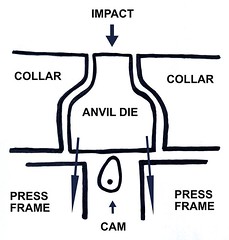 Mike Diamond: Yes. He ran a course called The Modern Minting Process and U.S. Minting Errors and Varieties, put out by the ANA. I looked at videos and other sources as I continued to learn about it. The diagrams in Arnie Margolis' book, as far as the operation of presses, is sometimes inaccurate. It was derived from Steiner and Zimpfer. It shows the anvil die sitting on a cam going up and down, which is fine, but it also implies that the impact is directly transmitted to the cam. There's a well-known fellow I've talked to who has worked in private mints and he basically said that the impact is absorbed by the press frame surrounding the anvil die. I'd have to draw a diagram, but yes, it's not exactly as the diagrams in the book show.
Mike Diamond: Yes. He ran a course called The Modern Minting Process and U.S. Minting Errors and Varieties, put out by the ANA. I looked at videos and other sources as I continued to learn about it. The diagrams in Arnie Margolis' book, as far as the operation of presses, is sometimes inaccurate. It was derived from Steiner and Zimpfer. It shows the anvil die sitting on a cam going up and down, which is fine, but it also implies that the impact is directly transmitted to the cam. There's a well-known fellow I've talked to who has worked in private mints and he basically said that the impact is absorbed by the press frame surrounding the anvil die. I'd have to draw a diagram, but yes, it's not exactly as the diagrams in the book show.
Greg Bennick: You mean in Arnie's book, in terms of the cam?
Mike Diamond: Yes, it made a whole lot more sense once I got an explanation. I couldn't imagine a cam withstanding the tons of pressure.
Greg Bennick: How do you recommend people today learn the minting process, given that Arnie's book, for example, is somewhat dated at this point, even if many of the basics are still accurate? How do you recommend people learn the minting process now?
Mike Diamond: Yeah, that's tough because all the references are out of print. It's unfortunate. I tried to get some numismatic publishers interested in a book. I wrote a few sample chapters, and submitted photos, along with a table of contents. But they ultimately all rejected it. They didn't think there was enough of a market for it.
Greg Bennick: That's too bad. I'm actually a little bit surprised. I would think that there would be quite a market, potentially, for it.
Mike Diamond: Well, I went to Whitman Press, I forget which other presses I went to, but they all turned down the idea. And I didn't feel like pursuing a vanity project.
Greg Bennick: That makes sense. Now, I see you as a scientist of error coins in a way. I tend to appreciate the esthetics of errors but when I read your articles and your columns and whatnot, it is as if you're a scientist who also appreciates the esthetics. The science part is fascinating because it shows a level of study and research that's beyond the norm. I was wondering if you might talk about your discoveries, the ones this scientific approach has led you to, because I know you've made an incredible number of discoveries over the years.
Mike Diamond: Well, as you say, I approach each error with an analytical bent. I like to know exactly what happened. Sometimes I can't establish exactly what happened. There are still a number of errors in my collection I know that are genuine (laughs) but I don't know how they came to be. But, you know, my background is in science. I approach things in a scientific fashion. I use my knowledge of the minting process to establish limits of what could have happened. Looking at the features of the coin, I'm able to deduce, and to reconstruct in many cases, more or less what happened. I'm able to think three dimensionally. I credit that in part to my training in anatomy, which compelled me to see the human body in three dimensions, as I would dissect each cadaver to show its contents to the students I was teaching. I visualize the moving parts involved: the hammer die, the anvil die, the collar, the feeder / ejector. You try to visualize exactly how they fit into the picture, and how they might be responsible for the physical appearance of the coin.
Greg Bennick: And this is why the minting process and knowledge of it, whether a rudimentary knowledge from older books or as close to current knowledge as one can get, is so essential. Because without that baseline knowledge of the minting process, a visualization is going to fall flat.
Mike Diamond: There was a recent article in Coin World on illicitly applied die impressions. Personnel in the back room were monkeying around with planchets and coins, applying dies - either real or crudely fabricated - to planchets and coins, creating what seem to be, and what are, bizarre looking specimens. The one I had was a proof nickel, where the first strike was a genuine -- either an in-collar uniface strike or struck by an early-stage uniface die cap. And after that they monkeyed with it, applying a non-proof nickel obverse die to the featureless obverse face and impressing a second design that looks die-struck but actually isn't struck in a press. Some of the proofs go for thousands and thousands of dollars because those are hard to fake. No one's going to take a proof error, which is highly valuable, and screw around with it outside the mint. Now the business strikes, they just look like crude attempts at creating a counterfeit.
Greg Bennick: It seems as though proof errors were not nearly as prevalent in terms of their availability years ago. Now all of these proof errors from the early seventies, San Francisco dated, are all over the place. Every auction seems to have them. What do you think about that?
Mike Diamond: Yeah, I've noticed that. I guess people have been sitting on them for decades and figure that now's the time to sell. And naturally, the vast majority were created on purpose, and, some of them represent illicitly applied die impressions. There's a proof Eisenhower dollar planchet with a weakly impressed Jefferson proof obverse design. And then if I recall correctly, a brockage from a proof dime on the reverse. The planchet was sandwiched between a Jefferson proof die and a dime proof coin. And I'm not exactly sure whether they used a mallet or some other device to press the images. But like almost all these illicit impressions, it's very weakly struck. It sold for big bucks.
Greg Bennick: I'm sure it did. I'm sure it's because they're curiosities, if nothing else. But I'm just intrigued by that because one of the things that I learned early on from some of the, so-called old timers, as it were, Arnie and whatnot, was that, there were impossible
errors. When I was growing up, I was told that it was impossible for a larger planchet to be struck by the dies of a smaller coin. Yet, every once in a while, a Lincoln cent struck on a Washington quarter, or the equivalent, happens along. I'm just wondering about those so-called impossible errors. I think they would probably fall into the same category of coins that were fabricated at the Mint rather than legitimate errors, even if they weren't available to the public for a long time. They just sort of popped up out of seemingly nowhere recently.
Mike Diamond: Right. It's my understanding that all of these errors, of larger coins struck with smaller designs, were intentionally created. Because it is hard to imagine how the larger disc would fit into the chute that deposits the coin into the feeder, and how it would fit into the feeder/ejector, which has very tight tolerances. There was a recent column of mine where I, as best I could, took measurements of the spacing between the two feeder fingers of a quarter feeder and the quarter itself. And there was basically no room for anything larger than a quarter planchet.
Greg Bennick: So that speaks to the idea that a quarter planchet would literally have to physically be placed by hand, essentially placed directly between the dies for that cent strike to occur.
Mike Diamond: Yes exactly. There are periods where these strikes on oversized discs are more common, like 1981 and 2000. In Canada, 1978 was the big year where you see cent designs struck on all manner of larger planchets and coins. A number of errors formerly considered impossible are now well documented, like major misalignments of the anvil die. All the resources I read said there was no possibility. And yet such coins are well documented.
Greg Bennick: Do you think that mint employees see the minting process differently than we do. Meaning we have picked up the pieces as best we can and we've figured out the minting process as well as research and history have allowed. But do you think Mint employees would tell a very different tale than what we tell about errors and the process that creates them?
Mike Diamond: Quite possibly. But reversing that, some mint employees know less than we do. Like Sean Moffitt, he was the fellow I was talking about earlier, who worked in lots of private mints. I had a long e-mail exchange with him years ago where I worked to convince him that stutter strikes are real and that they exist. He first insisted though, that this was impossible. I kept showing him one example after another and he finally caved and said, Yeah, that's what is happening!
(laughs)
More of Greg's error interviews can be found in previous issues of Errorscope magazine.
For more information on the Combined Organization of Error Collectors of America (CONECA), see:
https://conecaonline.org/
To read the earlier E-Sylum article, see:
MIKE DIAMOND INTERVIEW, PART ONE
(https://www.coinbooks.org/v26/esylum_v26n30a20.html)
ANA NUMISMATIST OF THE YEAR AWARDS
In this press release the ANA announces winners of their 2023 Numismatist of the Year and Young Numismatist of the Year awards. Congratulations! -Editor
One long-time numismatist and one budding collector are being recognized with American Numismatic Association (ANA) awards for their devotion to the hobby. The Numismatist of the Year is being awarded during the Pittsburgh World's Fair of Money® 132nd Anniversary Awards Banquet, 7-10 p.m. in the Allegheny Ballroom at The Westin Pittsburgh. The Young Numismatist of the Year was presented during this year's annual Summer Seminar event.
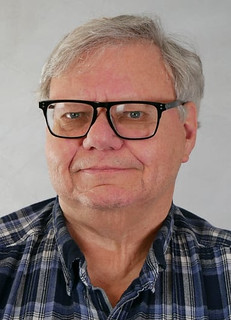 The Numismatist of the Year award recognizes collectors at the regional and/or national level who have demonstrated outstanding leadership within the hobby and the ANA. The 2023 recipient is longtime collector and former Citizen's Coinage Advisory Committee member Roger W. Burdette.
The Numismatist of the Year award recognizes collectors at the regional and/or national level who have demonstrated outstanding leadership within the hobby and the ANA. The 2023 recipient is longtime collector and former Citizen's Coinage Advisory Committee member Roger W. Burdette.
Burdette started collecting by filling holes in coin folders with pocket change and searching coin rolls. In the 1970s, he pioneered accurate, high-quality photography, and by the 1990s he started to specialize in numismatic research and writing, which led to his discovery of several U.S. pattern pieces. A prolific author, he has published over 90 research articles, contributed to publications such as The Numismatist and Coin World, and written several books, including the three-part Renaissance of American Coinage series and A Guide Book of Peace Dollars. Burdette is a member of the Rittenhouse Society and was on Coin World's 2021 list of the Most Influential People in Numismatics.
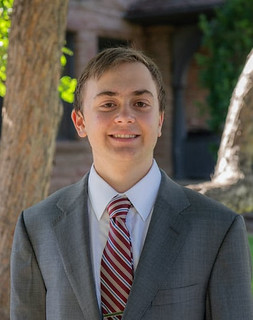 The Young Numismatist of the Year award honors young collectors for outstanding contributions to the hobby and industry. This award is limited to members of the ANA under the age of 18. The 2023 Young Numismatist of the Year is Kevin Lester.
The Young Numismatist of the Year award honors young collectors for outstanding contributions to the hobby and industry. This award is limited to members of the ANA under the age of 18. The 2023 Young Numismatist of the Year is Kevin Lester.
At 17 years old, Lester has developed strong leadership skills that have earned him the position of officer for the Colorado Springs Coin Club. He is an ardent volunteer, having assisted with the 2017 World's Fair of Money®, the 2022 National Money Show®, the YN Benefit Auction at the ANA's Summer Seminar, and several local coin shows in Colorado Springs.
I've been privileged to know Roger Burdette for years, since moving to Northern Virginia and reaching out for his help in creating a social group for like-minded collectors in the area. As a mere mortal numismatist whose brainwaters flow neither as fast nor as deep, I'm always two steps behind his numismatic vision and snarky humor. He researches, writes and publishes significant research far faster than I'm able to read and absorb it. Like the late Eric P. Newman, Roger cares only for the truth, seeking out original evidence, making careful observations and skillfully reaching conclusions. His contributions to the hobby will reach beyond 2023. -Editor
For a list of past award winners, see:
https://www.money.org/past-service-award-winners/
ANA CLAIN-STEFANELLI AND MEDAL OF MERIT AWARDS
In this press release the ANA announces winners of their 2023 Elvira Clain-Stefanelli Memorial Award and Medal of Merit. Congratulations to all! -Editor
Awards from American Numismatic Association
The American Numismatic Association (ANA) is presenting its Elvira Clain-Stefanelli Memorial Award for Achievement in Numismatics and Medal of Merit honors to members that have left indelible marks within the numismatic community. The recipients will be recognized during the World's Fair of Money® in Pittsburgh, August 8-12.
The Elvira Clain-Stefanelli Memorial Award for Achievement in Numismatics is presented annually to a woman who has made significant contributions to numismatics through her research, leadership, and/or mentorship, and who has demonstrated a longtime commitment to the betterment of numismatics. This year's recipient is the longest-serving and only woman editor-in-chief of The Numismatist, Barbara J. Gregory.
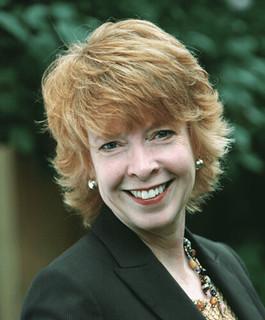 Gregory began her journey in numismatic publishing at the American Numismatic Association (ANA) in 1981 as an editorial assistant, and by 1988 she had become editor-in-chief, a position she held until 2020. During her time with the ANA, Gregory instituted many integral changes, such as initiating payment for contributing authors and columnists; being the first hobby editor to implement desktop publishing; and revamping the YN Literary Awards program, to name a few.
Gregory began her journey in numismatic publishing at the American Numismatic Association (ANA) in 1981 as an editorial assistant, and by 1988 she had become editor-in-chief, a position she held until 2020. During her time with the ANA, Gregory instituted many integral changes, such as initiating payment for contributing authors and columnists; being the first hobby editor to implement desktop publishing; and revamping the YN Literary Awards program, to name a few.
Says Gregory, "I am humbled and honored to receive this great honor. I take mentorship seriously, and the majority of my numismatic support has been in the form of encouraging new writers. I am so very pleased when collectors, especially women, tell me that I have inspired them to succeed in the hobby and in numismatic writing. I consider that my legacy."
Currently she edits the Central States Numismatic Society's quarterly publication, The Centinel. In this capacity, she single-handedly designs, edits, and lays out the magazine, and writes or otherwise selects all non-bylined content. Gregory will receive her award during the ANA's 132nd Anniversary Banquet taking place Friday, Aug. 11 from 7-10 p.m. in the Allegheny Ballroom at The Westin Pittsburgh during the ANA's annual convention.
The ANA's Medal of Merit honors individuals who have dedicated years of service to the Association and have worked hard to promote the hobby. This year's recipients are Mark Anderson, Don Ketterling, and Simcha Kuritzky.
Anderson has contributed his financial expertise to the ANA through serving on the ANA's Audit Committee. In addition, he received the ANA Presidential Award in 2011 and has lectured in the ANA's Numismatic Theater program. In 2015 ANA Past President Walter Ostromecki recognized Anderson as a Numismatic Point of Light.
A respected coin dealer for over 45 years, Ketterling has assisted the ANA in his work as a Summer Seminar advanced grading instructor since 2011. He has inspired hundreds of collectors and dealers through the art of coin grading.
Kuritzky, in addition to his numismatic research, has served as an ANA district representative since 1994 and has chaired the ANA Exhibits Committee since 2018. He has presented in the ANA's Numismatic Theater and Sundman series over the course of 30 years. Additionally, Kuritzky has exhibited extensively since 1975 and has won more ANA exhibit awards at ANA conventions than any other exhibitor.
Anderson, Ketterling and Kuritzky will be presented with their awards during the Member Awards and Donor Celebration event on Thursday, Aug. 10 from 3-4:30 p.m. at the David L. Lawrence Convention Center in Ballroom B.
EXHIBITS AT THE 2023 PITTSBURGH ANA
ANA volunteer Paul Hybert passed along this handy online guide to the Collector Exhibits Area at the upcoming American Numismatic Association event in Pittsburgh. This is always a must-see part of the show for me. The exhibitors work hard to display their material and educate all of us about their specialties. Check them out! This is a list of exhibit titles only - click through to the guide for full descriptions. -Editor
Class 1 — United States coins
- The Making of the Liberty Nickel
- I Like Ike: The History of the Eisenhower Dollar 1971-1978
- Making the Grade – The 1900 O Morgan Dollar Grading Set
- The Historically Significant Two Cent
Class 2 — United States fiscal paper
- Discovery: The last $10 1902 Plain Back printed for The Pacific National Bank of Nantucket
- Secretary of the U.S. Treasury Andrew W. Mellon, Pittsburgh Native And Signer of U.S. Currency
- American Dependence and Independence on Paper Money
-
Whose
John Hancock
Is That?
Class 3 — Medals, orders, decorations and badges
- Casting History: A Selection of Medals by Karl Goetz
- Zeppelins and the Great War: Medals Commemorate the Role of German Military Airships in World War I
- The Story of the Great Philadelphia Sanitary Fair of 1864
- The Medal-of-the-Month Club Medals & Emblems
- Meet Me At the Fair: A History of US World's Fairs
- Sealing the Deal – The Great Seal of the United States
Class 4 — Modern coins and medals
- Chaim Gross' Ten Commandments Sculpture Medals
- Texas Numismatic Association Annual Show Medals
Class 5 — Tokens
- Token for an Ice Worm Cocktail in Alaska
- McDonald's 50th Anniversary of the Big Mac
- U.S. Transportation Tokens
- The Token Price for Alabama's Natural Resources
- An Introduction to Twentieth Century (1948-1976) Encased Postage Stamps
Class Casino chips and gaming tokens
- Pittsburgher Max Klein's Gambling Chips
Class Engraved coins
- Engraved Coins from President McKinley's Funeral Train
- Identifying Hobo Nickels Carved By Frank Brazzell
Class 8 — Elongated coins
- Feline Elongated Type Set
- An Elongated Tribute to the Pittsburgh Area
- A Selection of Elongated Pennies and Postcards: Scenes of the 1933 Chicago World's Fair
- Multiple Varieties of Elongated Die Carriers
Class 10 — Regional U.S. numismatics
- Battle of Plattsburgh - Medals and Notes
- Series 1929 National Banknotes from Western Pennsylvania
- Western Pennsylvania National Currency
Class 12 — Numismatics of Europe
- Birth of the Netherlands
- Vive le Franc!
- The Kings and Queens of England Through Maundy Money
- Holocaust Numismatics 10 AD-1950, Selected Examples
Class 13 — Numismatics of Africa and the Middle East
- Israeli Ten Agorot Coins
- I Was a Teenage Emperor: Decoding Denarii from the Eastern Mints of Elagabalus
Class 15 — Gold Coins
- Early Republic of Mexico Hand-on-Book Half Escudo Gold Coins, 1825-1870
- The US Mint's Golden Girl
- U.S. Marshal Service Gold Coin, Celebrating a Career
Class 16 — Numismatic errors and error varieties
- A Selection of Ancient Minting Errors
- Enormous Mint Error Die Capped Set
Class 17 — Numismatic literature
- A Glimpse of the Life of Charles T. Steigerwalt, 1852 to 1912
Class 18 — General, specialized and topical
- The Currency of War
- It's Elementary!
- Phoenix Rising - Numismatic Impressions of a Legend
- Honoring Music Through a World of Paper Money
- Columbian Exposition of 1893 – A Selection
Class 19 — Convention theme
- The Golden Gate Bridge
- Heinz Relishes 150 Years in Pittsburgh
- George Westinghouse – Pittsburgh Industrialist
Class 20 — U.S. commemorative coinage
- Vermont's Catamount
- Equal Education
Class 21 — Single-Case
- 1858 Canadian Ten Cent Coin Varieties
- The Lion Monument at Tel Hai
- Boar Hunt!
- What's Past is Present
- Two Medals of The Hoover Company
- Fowler-McCann Lumber Company Scrip
Class 23 - A competitive exhibit not in any other class.
- Everything You Always Wanted to Know About Bracteates* (*but were afraid to ask)
For more information, see:
Exhibits at the 2023 ANA World's Fair of Money® — Sorted by Exhibit Class —
(http://www.chicagocoinclub.org/events/2023/ana/ex/all_by_cl.html#EC17)
SAINT-GAUDENS DOUBLE EAGLES AT ANA SHOW
This press release describes two special finish Saint-Gaudens double eagles to be made available for viewing at the upcoming ANA convention in Pittsburgh. -Editor
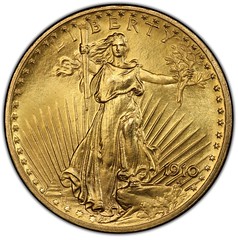 The unique Experimental Finish 1910 Saint-Gaudens Double Eagle, described by researchers as
The unique Experimental Finish 1910 Saint-Gaudens Double Eagle, described by researchers as one of the most important recent discoveries in 20th century American numismatics,
will be displayed alongside the finer of the two known Satin Finish Proof 1921 Saints at the American Numismatic Association 2023 Pittsburgh World's Fair of Money®. It is the first time these multi-million-dollar, Philadelphia Mint coins will be publicly exhibited together in their home state of Pennsylvania.
The coins are from the personal collection of Brian Hendelson, president of Classic Coin Company of Bridgewater, New Jersey (www.ClassicCoinCompany.com), and will be displayed at his booth, #1202, during the ANA convention in the David L. Lawrence Convention in Pittsburgh, August 8-12, 2023.
I love numismatics and American history. The first time these two coins were displayed together was at the ANA 2022 Convention in the Chicago area, and the gratifying response was tremendous. I'm delighted to let the public again have the opportunity to see these important United States coins in person, this time in the state in which they were struck over a century ago,
said Hendelson.
The lettered-edge 1910 Double Eagle, designed by acclaimed sculptor Augustus Saint-Gaudens, is graded PCGS SP66+ CAC. It is the only known example of this type of Experimental Finish with surfaces that are lighter and more reflective than Satin Finish proofs, and brighter than Matte Proofs of that era.
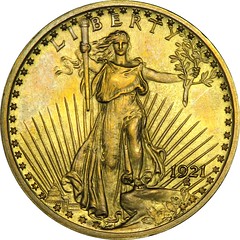 The 1921 Satin Finish Double Eagle is graded PCGS SP64+ CAC and was discovered in 2006, a half dozen years after the first known example was discovered. No others have been reported since then.
The 1921 Satin Finish Double Eagle is graded PCGS SP64+ CAC and was discovered in 2006, a half dozen years after the first known example was discovered. No others have been reported since then.
The Satin Finish was used on 1909 and 1910 Double Eagle proofs; however, experimental pieces with Satin Finishes from different years are now known, including the two from 1921.
For additional information about Classic Coin Company, call (908) 725-5600 or visit www.ClassicCoinCompany.com. For information about the ANA 2023 Pittsburgh World's Fair of Money, visit www.WorldsFairOfMoney.com.
THE BOOK BAZARRE
MINT ARTIST SAINT-GAUDENS VICTORY
PRINTS
Four U.S. Mint artists have created tributes to the Augustus Saint-Gaudens Victory statue. Free autographed prints will be available at the upcoming ANA event in Pittsburgh. Here's the press release. -Editor
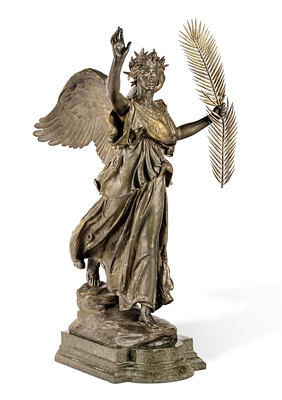 Four acclaimed artists who have
designed coins and medals for the United States Mint now have produced artwork
commemorating the famous Victory statue crafted a century ago by another acclaimed
numismatic designer, Augustus Saint-Gaudens. Free, hand-signed and numbered
copies of their renditions of Victory will be available while supplies last at the American
Numismatic Association 2023 Pittsburgh World's Fair of Money®.
Four acclaimed artists who have
designed coins and medals for the United States Mint now have produced artwork
commemorating the famous Victory statue crafted a century ago by another acclaimed
numismatic designer, Augustus Saint-Gaudens. Free, hand-signed and numbered
copies of their renditions of Victory will be available while supplies last at the American
Numismatic Association 2023 Pittsburgh World's Fair of Money®.
The four artists are Emily Damstra, Miley Frost, Michael Gaudioso, and John Mercanti. Their Victory artworks were commissioned by Kevin Lipton Rare Coins in Beverly Hills, California. During the convention, Lipton will display one of only three privately-owned reductions of Saint-Gaudens' famous masterpiece statue that has been in New York's Central Park area since 1903.
High-quality 8 by 10-inch prints of the artwork will be available free while supplies last Tuesday through Friday, August 8 to 11, courtesy of Lipton and Rare Collectibles TV.
The autographed prints can be obtained, and visitors can see the Victory statue, at booth #606 at the ANA convention. The specific times for personal appearances by the artists will be announced later.
The original model for the Victory statue was Harriette Eugenia Anderson who later was Saint-Gaudens' model for what are known today as America's most beautiful coins, the Saint-Gaudens $20 denomination Double Eagles of 1907 to 1933.
As part of the Artistic Infusion Program, Damstra has created 13 designs produced on United States coins, including the new reverse of American Silver Eagle bullion coins introduced in 2021, and three designs for United States Mint medals.
Among her many artistic accomplishments, Frost created the Family of Eagles
featured on the reverse of one-ounce American Gold Eagle bullion coins for 35 years,
from 1986 to 2021.
A Sculptor/Engraver at the United States Mint from 2008 to 2020, Gaudioso's numerous sculpting and engraving credits include the new Type Two American Silver Eagle bullion coins introduced in 2021, obverses of the 2014 Warren G. Harding, the 2015 Lyndon B. Johnson presidential dollars.
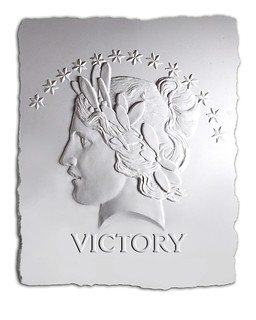 A former Chief Engraver of the United States Mint between 1974 and 2010,
Mercanti produced more coin and medal designs than any employee in the Mint's
history. They include the original reverse design of the popular American Silver Eagle
bullion coins and five of the 50 State Quarters Program coins: Arkansas, Iowa, North
Carolina, Pennsylvania, and West Virginia.
A former Chief Engraver of the United States Mint between 1974 and 2010,
Mercanti produced more coin and medal designs than any employee in the Mint's
history. They include the original reverse design of the popular American Silver Eagle
bullion coins and five of the 50 State Quarters Program coins: Arkansas, Iowa, North
Carolina, Pennsylvania, and West Virginia.
The ANA 2023 World's Fair of Money will be in Halls A and B of the David L. Lawrence Convention Center, 1000 Fort Duquesne Blvd., Pittsburgh, Pennsylvania, August 8-12. For additional information about the convention, visit www.WorldsFairofMoney.com.
For information about Kevin Lipton Rare Coins, call 310-712-8118, and for information about Rare Collectibles TV, call 800-581-7273 or visit www.RareCollectiblesTV.com.
ATLAS NUMISMATICS SELECTIONS: JULY 30, 2023
Atlas Numismatics has updated their website with 384 new coins, medals, and tokens at fixed prices. Selections include the following items. -Editor
1074996 | AUSTRIAN STATES. Salzburg.
Hieronymus of Colloredo. (Archbishop,
1772-1803). 1777 M (Franz Matzenkopf) AR Thaler. NGC MS65. 28.03gm.
HIERONYMUS D · G · A · ... Bust right / Cardinal's hat above oval, mantled shield,
crown above, divided date below. KM 435; Dav.-1263; Probszt 2430; Zöttl 3213 (Type
2e).
$3,950
To read the complete item description, see:
https://atlasnumismatics.com/1074996/
1075789 | FRANCE. Louis XIV. 1691-D AV Louis d'Or. NGC MS65.
Lyon. Old
laureate head of Louis XIV / Crowned arms of France. KM 278.18; Fr.-429; Gadoury
250.
$14,950
To read the complete item description, see:
https://atlasnumismatics.com/1075789/
1075067 | FRANCE. 1889 (cornucopia) Gilt CU Souvenir Medal. NGC MS63. By Charles Trotin, Usines Metallurgique Parisienne. Edge: Plain. 42mm. 41.96gm. LES TRAVAUXONT COMMENCÉ LE 27 JANV.1887 (The work commenced 27 January 1887)// LE MONUMENT A ÉTÉ INAUGURÉ LE 6 MAI 1889 (The monument was inaugurated on 6 May 1889)// INVALIDES 105: NOT.DAME 66: COLOGNE 169: OPERA 56:/ GT PYRAMIDE 145: PANTHEON 83: ST PIERRE 132/ ARC DE TRIOMPHE 45: ROUEN 150/ OBELISQUE WASHINGTON 169/ TOUR EIFFEL 300. City view of Paris with the Eiffel Tower at center; inscriptions to either side and in exergue / SOUVENIR/ DE MON ASCENSION/ AU SOMMET DE/ LA TOUR EIFFEL. Legend and a blank cartouche for inscription.
Uninscribed Eiffel Tower ascension medal. Includes original case.
$269
To read the complete item description, see:
https://atlasnumismatics.com/1075067/
1075057 | GERMANY, WEIMAR REPUBLIC. 1925-D AR Pattern 5 Mark. PCGS
SP65.
Munich. Edge: Plain. 36mm. 25.19gm. Germania bust left / Eagle. Schaaf 331/G2
(2/2); Unlisted in Beckenbauer; Jaeger 331.
$4,950
To read the complete item description, see:
https://atlasnumismatics.com/1075057/
1075012 | SWISS CANTONS. Basel. 1793 H AR Thaler. NGC MS63.
25.95gm. City
view above date within sprigs / DOMINE CONSERVA NOS IN PACE. Basilisk facing
left arms of Basel at lower left. KM 185; Dav.-1757; D./T. 749.
$7,950
To read the complete item description, see:
https://atlasnumismatics.com/1075012/
Updates to their online inventory are issued monthly. For more information and to sign up for the firm's monthly newsletter, visit: atlasnumismatics.com
Upcoming Events
Atlas will be attending the following numismatic convention:
The 2023 ANA Pittsburgh World's fair of Money
August 8-12, 2023 - Table #622
David L. Lawrence Convention Center
1000 Fort Duquesne Boulevard, Pittsburgh, PA.
WAYNE'S NUMISMATIC DIARY: JULY 30, 2023
For my work with the Newman Numismatic Portal I attended a conference by the Internet Archive at the Martin Luther King Jr. Library in Washington D.C. on Wednesday. It was a sweltering hot day and I had an hour to kill before the event began at Noon. Across the intersection was the National Portrait Gallery, housed in the old Patent Office building. Unfortunately it didn't open until 11:30, but I hung around and took a whirlwind tour of some first-floor exhibits.
Here are some of the great exhibits I saw, several with connections to numismatics or my hometown of Pittsburgh, location of the upcoming ANA convention.
The Daguerre Monument
Outside the Old Patent Office Building is a monument to photography pioneer Daguerre. Numismatic bibliophiles, researchers and collectors would all be hamstrung in their efforts without photographs of coins and paper money.
Men of Progress
The first painting to catch my eye was this 1862 group portrait. Outside of numismatics my interests include the history of science, technology and business, and the works of the men pictured are remarkable achievements, even though few names would be recognized readily today.
Fifth from the left is the connection to numismatics (and daguerrean photography in the U.S. - Joseph Saxton (1799-1873)). QUICK QUIZ: what can you tell us about Saxton?
In 1857, the inventor of a coal-burning stove, Jordan Mott, commissioned Christian Schussele to paint this group portrait of nineteen scientists and inventors of the United States who had altered the course of contemporary civilization.
Schussele represents the group gathered around a table discussing Samuel F. B. Morse's telegraph device, with other inventions and diagrams scattered about the room. The portrait did not commemorate an actual occasion but was meant to honor national achievement. Schussele began by sketching each figure individually before designing the group composition. In the background, he included a painting of the men's famed eighteenth-century predecessor, Benjamin Franklin.
Men of Progress pays tribute to the remarkable growth of the U.S. economy by the 1850s.
For more information, see:
Men of Progress
(https://npg.si.edu/object/npg_NPG.65.60)
Henry and Helen Frick, Mary Cassatt
The portrait on the right is Impressionist artist Mary Casssat, painted by Edgar Degas. Cassatt was born in Pittsburgh.
Thomas Edison
The museum had more to offer than just portraits. Here's Thomas Edison and one of his inventions, the tin foil phonograph.
David Rittenhouse
Back to numismatics, here's the first Director of the U.S. Mint, scientist and astronomer David Rittenhouse.
Robert Tait MacKenzie Plaque
The artwork wasn't only in oil - here's a portrait plaque of Violet Oakley by Robert Tait MacKenzie.
U.S. Mint Coin Store
On my way home from the conference I passed the U.S. Mint Coin Store.
New Coin Books
Well, not so new, but new to my library. These two titles from the American Numismatic Society book sale arrived this week.
To read the earlier E-Sylum article, see:
ANS SUMMER BOOK SALE!
(https://www.coinbooks.org/v26/esylum_v26n30a03.html)
Miami Rare Coin Co. Money Pouch
Later in the week this arrived in the mail from
Bob Steinberg - a Miami Rare Coin Co. money pouch made by his father.
Bob writes:
"I believe my late father William "Foxy" Steinberg had these made sometime between 1955-1965 (as the company who made them became a corporation in 1965 and changed their name slightly), so it had to be made prior to 1965. I don't know how many my dad ordered but I would guess maybe 100 or so to give out to customers and dealers. Check out the old telephone number with the two letter prefix!"
Most of our readers are too young to remember those prefixes, so here's a lesson from Wikipedia. The image is an old rotary dial showing the telephone number LA-2697, which includes the first two letters of Lakewood, New Jersey. To call the number people would dial 5-2-2-6-9-7 -Editor
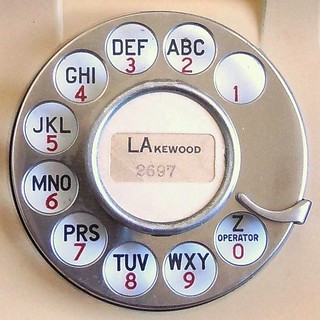 A telephone exchange name or central office name was a distinguishing and memorable name assigned to a central office. It identified the switching system to which a telephone was connected, and facilitated the connection of telephone calls between switching systems in different localities.
A telephone exchange name or central office name was a distinguishing and memorable name assigned to a central office. It identified the switching system to which a telephone was connected, and facilitated the connection of telephone calls between switching systems in different localities.
Central offices were usually identified by names that were locally significant. The leading letters of a central office name were used as the leading components of the telephone number representation, so that each telephone number in the area was unique. These letters were mapped to the digits of the dial, which was indicated visibly on the dial's numbering plate.
On the number card of the telephone instrument, the name was typically shown in full, but only the significant letters to be dialed were capitalized, while the rest of the name was shown in lower case.
For more background on telephone exchange names, see:
https://en.wikipedia.org/wiki/Telephone_exchange_names
To read the earlier E-Sylum article, see:
HIGGINS MUSEUM COIN AND BANK BAGS
(https://www.coinbooks.org/v26/esylum_v26n30a17.html)
REVOLT-ERA HALF-SHEKEL FOUND
Aaron Oppenheim passed along this article about a find in Israel of a half shekel from the first Jewish revolt. Thanks. -Editor
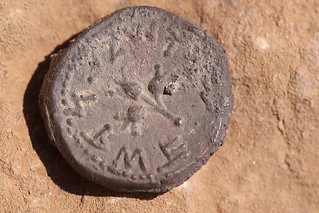 A 2,000-year-old silver half-shekel bearing the Hebrew inscription
A 2,000-year-old silver half-shekel bearing the Hebrew inscription Holy Jerusalem
has been discovered in the Judean desert, the Israel Antiquities Authority revealed on Tuesday.
The rare coin, dated to 66/67 C.E., the days of the first Jewish revolt against the Romans, was discovered at the entrance to a cave near Ein Gedi. The find was part of a cave survey operation, now in its sixth year, that the IAA is managing in cooperation with the Israeli Heritage Ministry and an archaeology staff officer at the Civil Administration.
Recently, as part of the survey, IAA inspectors had reached a section of a cliff along one of the streams in the Ein Gedi area, and noticed the coin sticking out of the ground at the entrance to one of the cliffside caves.
Yaniv David Levy, a researcher in the IAA's Coin Department, said, You can see an inscription written in unvowelized Hebrew… on this coin from the first year of the rebellion. This may be proof of the process of formulating inscriptions… in later years of the rebellion, the inscription ‘Holy Jerusalem' is written in plene spelling [in which letters normally omitted are present].
He noted also that the Ein Gedi coin features three pomegranates in the center of the coin, a familiar symbol on the Israeli pound, used by the State of Israel until 1980.
A goblet appears on the other side, and above it the Hebrew letter alef is inscribed, indicating the first year of the rebellion, as well as the inscription Hatzi Shekel
[half shekel], indicating the value of the coin.
The goblet was a symbol typical of the coins used by the Jewish population in the late Second Temple period. These coins were minted in values ??of shekel
and half shekel
during the first rebellion against the Romans, which took place in the Land of Israel from 66 to 70 C.E. This rebellion ended in the destruction of the Second Temple in Jerusalem.
To read the complete article, see:
Rare Great Revolt-era half-shekel found in Judean desert
(https://www.jns.org/israel-news/archaeology/23/7/26/305658/)
KANAKA‘OLE QUARTER CLASHED DIE VARIETY
Ken Potter published a Numismatic News article about an interesting new clashed die variety. Here's an excerpt - see the complete article and image gallery online. -Editor
A Major Clashed Die variety like none I have seen in recent years has been discovered on a 2023-P Edith Kanaka‘ole American Women Program quarter.
It was first reported to me by Sonya Holt Esquibel of Alabama, who obtained one from Chad Savage on TikTok after another one of her friends, Maria Trammel, found two out of two rolls she purchased from Chad and advised him of her find. Savage reports finding 11 so far, having not checked all the rolls at the time of this writing.
In my opinion, the coin has more going for it than even many of the stronger clashes. First and foremost, the coin has pizzaz, or what I call sizzle in the steak,
or what Bill Fivaz likes to call character.
Not only is it very strong, but it stands out like a sore thumb right in the center of George Washington's profile from a reverse design that will have a short run never to be seen again.
Unfortunately, it just missed being considered for the Cherrypickers' Guide [CPG]to Rare Die Varieties by Bill Fivaz and J.T. Stanton, edited by Larry Briggs. The CPG 6th Edition Volume II is officially being released Aug. 5 at the American Numismatic Association's World's Fair of Money and is already at the printer. According to Fivaz, a seventh edition of this volume is years away, and they are not currently assigning numbers for coins that far out from publication. If it eventually gets in the book, it should increase in value more unless Professional Coin Grading Service and Numismatic Guarantee Company recognize it first, at which point it will undoubtedly find its own value without the aid of CPG.
While I am no soothsayer, I have a sneaking suspicion that this variety will elicit strong interest from collectors. As for what its value might be, it is too early to tell and only supply and demand and auction prices will dictate value.
It is being included in the next edition of Strike It Rich With Pocket Change with a Variety Coin Register listing number of VCR#1/CDOR#1.
A clashed die occurs when the planchet delivery system fails to deposit a planchet within the dies and the press cycles, causing the dies to smash or clash into each other. When this occurs, the design of one or both dies may impart outlines and sometimes some raised areas on each other. Coins struck with these dies will show these aberrations until they are removed by the Mint via abrasives or wear away.
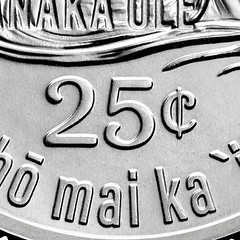 Great error. But these images brought to mind a question about the coin design itself. I know I'm always a few steps behind when it comes to news of new coin designs, but when did we start expressing the coin's denomination as "25¢"? I thought by law it had to be spelled out as "Quarter Dollar."
Great error. But these images brought to mind a question about the coin design itself. I know I'm always a few steps behind when it comes to news of new coin designs, but when did we start expressing the coin's denomination as "25¢"? I thought by law it had to be spelled out as "Quarter Dollar."
Leafing through my 2024 Redbook it looks like "25¢" appeared first on this coin. What gives? Was there language in the authorizing legislation allowing this? I didn't notice anything in the accompanying text mentioning this. What am I missing?
The reverse was designed by Emily Damstra of the Artistic Infusion Program and sculpted by medallic artist Renata Gordon. -Editor
To read the complete article, see:
Major Error Discovered on Kanaka‘ole Quarter
(https://www.numismaticnews.net/us-coins/major-error-discovered-on-kanakaole-quarter)
Celia Cruz Quarter on NPR
On a related note, Arthur Shippee passed along this link to a National Public Radio story on the new 2024 Celia Cruz quarter design. Thanks - great design. It also sports a 25¢ denomination. Looks like a trend. -Editor
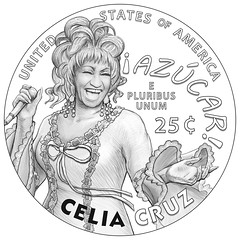 The U.S. Mint revealed the design of a quarter featuring singer Celia Cruz. She's the first Afro Latina to have that honor, and her quarter is just as vibrant as her music. She seems to be dancing with microphone in hand and her signature slogan, azucar - sugar - is on the coin, Spanish next to the Latin e pluribus unum - from many, one. Es la verdad en los Estados Unidos.
The U.S. Mint revealed the design of a quarter featuring singer Celia Cruz. She's the first Afro Latina to have that honor, and her quarter is just as vibrant as her music. She seems to be dancing with microphone in hand and her signature slogan, azucar - sugar - is on the coin, Spanish next to the Latin e pluribus unum - from many, one. Es la verdad en los Estados Unidos.
To listen to the story:
New quarter will feature legendary singer Celia Cruz, U.S. Mint says
(https://www.npr.org/2023/07/25/1189901957/new-quarter-will-feature-legendary-singer-celia-cruz-u-s-mint-says)
THE 1862 POSTAGE CURRENCY RIOT
As readers know, my numismatic specialty for many years was the U.S. Civil War and the explosion of new forms of money both North and South. The Small Change Panic of 1862 kicked off the process, and one Union attempt to solve the situation led to another problem. Here's a Stack's Bowers article by Chris Bulfinch on the small change riot in Cincinnati. -Editor
In an age of cashless transactions, it's hard to imagine rioting over a shortage of small change. The economy of mid-19th century America, however, ran on physical currency and in November 1862 people in Cincinnati took to the streets, practically laying siege to the Customs House in response to an acute shortage of small change and a lethargic government response.
The disappearance of small change at the outset of the Civil War – and the responses at both the legislative and local level – have been explored in detail by many numismatic historians. The monetization of postage stamps, authorized at the federal level in July 1862, introduced Postage Currency, subsidiary denomination paper bills redeemable for postage stamps or, in sums five dollars and greater, for United States notes; the notes could also be used to pay customs dues up to five dollars. Postage Currency would evolve into the longer-lived Fractional Currency in subsequent issues stretching into the 1870s. Distribution of this currency was often too slow for the rampant demand, as evidenced by the events that unfolded in Cincinnati in 1862.
Enoch Carson had the misfortune of working as a customs collector in Cincinnati as the change shortage worsened in 1862. He traveled to Washington D.C. in October of that year to communicate the acuteness of the shortage and try to obtain more Postage Currency. He was promised a $25,000 shipment which, though woefully inadequate to meet the city's needs, would provide some relief.
Notices posted in newspapers announced forthcoming distributions of Postage Currency and in the fall of 1862, the Cincinnati Enquirer advertised the $25,000 disbursement set for November 4. Citizens could buy up to $5, meaning that a tiny fraction of Cincinnati's 160,000 residents could count on purchasing the full allotment and stories of industrious (if less than scrupulous) people obtaining more than their share circulated. Unfortunately for Carson, on November 4, thousands of citizens queued up to receive their $5 ration and their mood soured after about $15,000 had been disbursed. The scene was chaotic, as described by the Enquirer:
The Collector's office, at the Customs House, has been besieged daily to the most provoking degree. In church or bed, on the street or in the office, there are cormorants for postal currency, begging for five dollars' worth of Uncle Sam's change. The annoyance is without parallel, and the demand is greater than it was three months since. . . The people clamored: loudly, and openly declared that there was not fair play, although a single passage way had been constructed for a procession to pass the window, each passerby receiving his $5 worth of the currency.
The Army had to be called in to quell the disturbance at bayonet-point. The Enquirer estimated that fewer than 10% of the population obtained the notes. Carson suggested the City Council take over distribution of the notes, with each member distributing the cash in their respective wards. A version of this plan, which saw the notes distributed initially to government offices which controlled subsequent distribution, was eventually adopted.
Fred L. Reed's article Riot erupts over small change shortage
in the January/February 2006 edition of Paper Money, the journal of the Society of Paper Money Collectors, served as the inspiration and main source for this blog. Readers interested in Civil War-era numismatics should absolutely consult Reed's works on Encased Postage Stamps and Postage Stamp Envelopes (a type of postage stamp encasement used alongside Encased Postage Stamps)
The Cincinnati riot was not the first currency-inspired civil disturbance in U.S. history. Future blogs will focus on the Paper Money Riot that took place in Exeter, New Hampshire in 1786 and the 1740 Philadelphia Halfpence Riot.
We'll look forward to further reports from the numismatic riot desk! -Editor
To read the complete article, see:
DID YOU KNOW THAT A SHORTAGE OF POSTAGE CURRENCY STOKED A RIOT IN CINCINNATI IN 1862?
(https://stacksbowers.com/did-you-know-that-a-shortage-of-postage-currency-stoked-a-riot-in-cincinnati-in-1862/)
CANADA'S FRACTIONAL CURRENCY
Here's a short but nicely illustrated article about Canada's version of fractional currency. Found via News & Notes from the Society of Paper Money Collectors (Volume IX, Number 4, July 11, 2023) -Editor
Canada used to have a 25-cent note that first appeared in 1870. The bill was meant to be a temporary solution to an ongoing problem, and many were even against it. However, it ended up being in circulation for 65 years.
According to Canadian Government Paper Money, 25-cent and 50-cent silver coins in the US depreciated by 5% compared to gold during the American Civil War. Since Canada received these coins at full face value,
the coins poured into the country.
Since banks and post offices refused to accept these American coins, retailers had no choice but to sell them at a discount to brokers. In turn, these brokers sold the silver to manufacturers and buyers of grain and cattle.
Thus the cycle repeated, and the ‘American silver nuisance' resulted in hardship to farmers, merchants, and factory workers who had no choice but to accept their losses,
states the book.
The flood of American silver had other effects: $1 and $2 Province of Canada notes were being crowded out of circulation.
To combat this, in 1870, the minister of finance, Sir Francis Hincks, suggested that the government buy American silver at a discount, export it, and artificially lower its value (80 cents on the dollar) to ensure against its return to the country.
In its place, Canada would order its first silver coins from the Royal Mint in London.
Until then, 25-cent notes would be printed while the coins were prepared.
Hincks' efforts worked — American silver was sent back to the US, while the rest was sent to England as bullion. However, while his plan worked out, there was one thing he didn't anticipate.
Despite being a temporary solution, these shinplasters
would become so popular that they'd be in circulation for the next 65 years.
The note comes in three varieties.
To read the complete article, see:
Did you know that Canada once had a 25-cent note? (PHOTOS)
(https://dailyhive.com/vancouver/canada-25-cent-note)
1992 RUSSIAN PRIVATIZATION VOUCHERS
Pablo Hoffman passed along this great Delancey Place piece about privatization vouchers issued in post-Soviet Union Russia. -Editor
In the early 1990s, Bill Browder traveled to Moscow for Salomon Brothers to buy Russian companies for very low prices. The country was in shambles and had only the most primitive financial and payment systems, including the physical vouchers the government had distributed to its people, for free, as it transitioned to a market economy:
Once I arrived in Moscow, I set up a makeshift office in a room at the Baltschug Kempinski Hotel on the south bank of the Moscow River, across from Saint Basil's Cathedral. The first step was to get the money to Russia, which meant we needed somebody who could receive the cash and help us buy the vouchers. Fortunately, we found a Russian bank that was owned by a relative of an employee at Salomon. Bobby thought that would be better than wiring our money into an unknown Russian bank, so he had someone from the back office organize the paperwork, and authorized the transfer of $1 million for a trial run.
Ten days later we began purchasing vouchers. The first step was to collect the cash at the bank. I watched as the clerks withdrew the cash from the vault in crisp $100 bills and loaded it into a canvas sack the size of a gym bag. This was the first time I had ever seen a million dollars in cash, and it was strangely unimpressive. From there, a team of security guards took it by armored car to the voucher exchange.
The Moscow voucher exchange was in a dusty, old Soviet convention hall across from the GUM department store several blocks from Red Square. It was organized in a series of concentric rings of picnic tables under an electronic trading board hanging from the ceiling. All transactions were done in cash, and, since it was completely open to the public, anyone could walk in with vouchers or cash and transact business. There was no security, so the bank kept its guards around at all times.
The way these vouchers found their way to Moscow was a story in itself. The Russian people had no idea what to do with the vouchers when they received them for free from the state and, in most cases, were happy to trade them for a $7 bottle of vodka or a few slabs of pork. A few enterprising individuals would buy up blocks of vouchers in small villages and sell them for $12 each to a consolidator in larger towns. The consolidator might then travel to Moscow and sell a package of a thousand or two thousand vouchers at one of the picnic tables on the periphery of the exchange for $18 each. Finally, an even bigger dealer would consolidate them into bundles of twenty-five thousand vouchers or more and sell them for $20 each at the center tables. Sometimes individuals would bypass the whole process and lurk around the outskirts of the exchange, trying to find good prices on small lots. In this profusion of cash and paper, there were hustlers, businessmen, bankers, crooks, armed guards, brokers, Muscovites, buyers and sellers from the provinces -- all of them cowboys on a new frontier.
Our first bid was $19.85 per voucher for ten thousand. After we announced our bid, there was a commotion on the floor and a man raised a card with the number 12 printed on it. I followed the bank employees and guards to a picnic table with 12 displayed on it, where our team presented the cash and the people at the table presented the vouchers. The sellers took our $10,000 bricks of hundreds and put them one by one into the dollar counter. The machine whirred until it stopped at $198,500. At the same time, two people from our side inspected the vouchers, looking for forgeries. After about thirty minutes, the deal was concluded. We took the vouchers to our armored car and dealer number 12 took the cash to his.
This exercise was repeated over and over for a number of weeks until Salomon had bought $25 million worth of vouchers -- but this was only half the battle. After that, we needed to get the vouchers invested in shares of Russian companies, which was done at so-called voucher auctions. These auctions were unlike any other, since the buyers didn't know the price they were paying until the auction concluded. If only one person showed up with a single voucher, then the entire block of shares being auctioned would be exchanged for that one voucher. On the other hand, if the whole population of Moscow showed up with all of their vouchers, then that block of shares would be evenly divided among every single voucher that was submitted at that auction.
The scenario was ripe for abuse, and many companies whose shares were being sold would do things to prevent people from attending the voucher auctions so that insiders could buy the shares cheaply.
Because these auctions were so bizarre and hard to analyze, few people participated -- least of all Westerners. This resulted in an acute lack of demand, which meant that the prices were remarkably low, even by Russian standards. Although Salomon was effectively bidding blind at each auction, I'd carefully analyzed every major voucher auction in the past, and in each case the price of the shares started trading at a significant premium to the price paid in the auction -- sometimes double or triple. Unless something changed, the firm was essentially guaranteed to make a sizable return just for participating in the auctions.
Once we started accumulating vouchers, I watched the government's announcements of auctions like a hawk. In the end, I recommended to Bobby that we participate in a half dozen auctions, including the sale of Lukoil, a Russian oil company; Unified Energy System (UES), the national electricity company; and Rostelecom, the national phone company.
By the time we were done, Salomon Brothers had used these auctions to become the owner of $25 million worth of the most undervalued shares that had ever been offered anywhere in history. Bobby and I were convinced that Salomon would make a fortune. We just needed to wait.
And we didn't have to wait long. In May 1994, the Economist published an article entitled ‘Time to Bet on Russia?' This laid out in simple terms the same math regarding the valuation of Russian companies that I had learned on my first trip to Moscow. In the following days billionaires, hedge fund managers, and other speculators started calling their brokers asking them to look into Russian stocks. This caused the nascent Russian market to move, and move dramatically.
In a short time our $25 million portfolio was transformed into $125 million. We had made $100 million!
Ah, the joys of a free market. Is this how the oligarchs got their mitts on so much Russian wealth? -Editor
Pablo adds:
"A different kind of paper money;
although vast quantities must have been printed, I've never seen one of these Russian notes."
Have any of our readers seen one of the physical vouchers? Are any in museum collections? The illustration may be taken from the quoted book, Red Notice by Bill Browder, 2015.
The closest event in recent U.S. history that I'm aware of was the first wireless spectrum auction. The story is well told in a book called Wireless Nation: The Frenzied Launch of the Cellular Revolution in America by James B. Murray, Jr.
"...the cell phone business became the biggest Federal giveaway since the Oklahoma Land Rush - and the most misguided one in history. From 1985 on, the U.S. government essentially ran a casino, awarding valuable spectrum licenses - the coveted permits needed to run cell phone systems - via lottery. Anyone could win, regardless of whether they'd ever run a business, or even seen a cell phone. Hucksters pedaled applications to anyone who would buy, and all over America random golddiggers and sincere hopefuls tried their luck. When the lottery drum stopped twirling, truckdrivers, nurses, deep-sea divers and preachers found themselves newly minted cell phone entrepreneurs."
The Craig McCaws of the business world happily drove coast to coast with lawyers and bankers in tow, buying up these permits from the lucky winners. And that's how hairstylists, pig farmers and insomniacs watching late-night infomercials helped build the mobile phone industry we rely on today. -Editor
To read the complete article, see:
LOOTING MOSCOW -- 7/25/23
(https://www.delanceyplace.com/view-archives.php?p=4859)
THE POPE'S PORTUGUESE BANKNOTE CARPET
An artist created a carpet of banknotes to protest expenses of the Pope's upcoming visit to Portugal. -Editor
Portugal's famed street artist, Bordalo II, has broken into a Lisbon venue where Pope Francis will celebrate a mass next week and rolled out a huge carpet of oversized banknotes to criticise how much the state has spent on the event.
Francis will travel to Lisbon from Aug. 2-6 to attend the World Youth Day global gathering of young Catholics, which is expected to bring together hundreds of thousands of pilgrims.
Bordalo II, known for his political art pieces often made from garbage, shared pictures and videos of the carpet, featuring humongous 500-euro ($551) notes, being rolled out down the venue's stairs on Thursday in a protest he described as the "walk of shame".
"At the time when many people are fighting to keep their homes, their work and their dignity, millions worth of public funds have been invested to sponsor the (papal) tour," the artist, whose real name is Artur Bordalo, wrote on Instagram.
Official estimates in January showed the event would cost 161 million euros, to be paid by the government, the Catholic Church, the city council of Lisbon and nearby Loures.
A number of public figures and politicians have criticised the Portuguese state for its share of the expenditure, which the government put at 30 million euros in January, as millions of Portuguese face galloping inflation.
To read the complete article, see:
Portuguese artist rolls out banknote carpet to slam pope's visit costs
(https://www.reuters.com/world/europe/portuguese-artist-rolls-out-banknote-carpet-slam-popes-visit-costs-2023-07-28/)
THE BARNES & NOBLE BOOKSTORE REVAMP
For bibliophiles, a Wall Street Journal article looks at the recent turnaround at Barnes & Noble. -Editor
 Barnes & Noble was once the enemy of independent bookstores. Now it's trying to be more like them. And no place better explains the improbable reinvention of the biggest American bookstore chain than the Barnes & Noble on the Upper West Side of Manhattan.
Barnes & Noble was once the enemy of independent bookstores. Now it's trying to be more like them. And no place better explains the improbable reinvention of the biggest American bookstore chain than the Barnes & Noble on the Upper West Side of Manhattan.
That shop in one of the world's greatest book markets has been a battleground since the day it opened three decades ago. It might be the most iconic of the chain's 596 locations: It's the store that helped inspire the mega-store run by Tom Hanks's character in the classic romantic comedy You've Got Mail.
It also has been the site of a grand experiment for much of the past year. The chain invested millions of dollars to rebuild this Barnes & Noble into a model for its other stores to emulate as the company transforms into a bookseller for the modern age.
As a privately held company, Barnes & Noble doesn't report financial results, but it's clear that it's no longer near death. While the number of locations has decreased 5% since the acquisition, the chain is now expanding and plans to open 45 stores this year, including some that closed and reopened with smaller footprints, like one on the Upper East Side that opened this month to a line around the block. It's also giving facelifts to existing shops across the country. But not every store needs a complete makeover to feel refreshed. I recently popped into a Barnes & Noble off the interstate in Pueblo, Colo., where even subtle tweaks made for a delightful browsing experience.
Barnes & Noble used scale and uniformity to its benefit in the 1990s and 2000s, but those advantages have since become liabilities. Bookstores don't have to be the same from one to another. They shouldn't be, either. The best managers know the books they sell and the customers who buy them—and what works on the Upper West Side might not work in West Des Moines.
The major renovation was necessary because the mission of bookstores has changed since this one opened in 1993. Back then, someone who wanted a specific book would visit their favorite brick-and-mortar store. Now anyone in need of that book probably visits Amazon.
This profound shift in consumer behavior prompted Barnes & Noble to reconsider the very purpose of a Barnes & Noble.
A physical bookstore competing against a $1.4 trillion online everything store must give people the stuff they know they want and the stuff they didn't know they wanted.
We're here to help people browse,
Daunt said.
There's not always a right answer. But there are wrong answers. It baffles Daunt that 20% of the chain's locations sort history books alphabetically by author. This was a store that had history arranged A-to-Z,
he said last month. Now it's chronological.
I wholeheartedly agree with the emphasis on browsing. That's the delight of visiting libraries and bookstores (both new and used). If you already know exactly what book you want, just order it online. To find the books you never heard of but didn't know you wanted, browsing in a store is ideal, and discovering a new title is a treat. -Editor
To read the complete article (subscription required), see:
That Cool New Bookstore? It's a Barnes & Noble.
(https://www.wsj.com/articles/barnes-noble-bookstores-james-daunt-c1afc06b)
LOOSE CHANGE: JULY 30, 2023
Here are some additional items in the media this week that may be of interest. -Editor
In a recent CoinWeek article, researcher Roger Burdette goes there, calling out some industry practices that don't always square well with facts. See the complete article online. -Editor
You can't make a silk purse out of a sow's ear,
is an expression that has been around for at least 500 years. It emphasizes the near impossibility of turning something inferior or repellant into a valuable or attractive item. In coin collecting, some attempt this by polishing a common coin, then promoting it as a Proof
. Others try to claim that parking lot damage is actually a mint error and worth a lot of money – plus the promoter just happens to have some for sale at high prices.
In this little column, I'm going to use a somewhat interesting variation: You can't make a silk purse out of a sow's ear,
applies to authenticators who assign highfalutin titles to some coins without reason, rationale, or evidence. This is not the gradeflation
that we all loath; this is giving a coin a specious title and exotic-sounding attribute that does not, in reality, exist. It is a fake title built on self-serving ignorance and possibly a goodly portion of old fashioned greed.
To read the complete article, see:
Roger Burdette: Silk Purse
Coins
(https://coinweek.com/roger-burdette-silk-purse-coins/)
In the our-prayers-have-been-answered department, there is now a beer made of actual money. Found via News & Notes from the Society of Paper Money Collectors (Volume IX, Number 6, July 25, 2023) -Editor
New York City's Evil Twin Brewery and Norway's Lervig Aktiebryggeri Brewery have teamed up to make beer out of pizza and Norwegian cash. When the beer was first made in 2015, the whole point was to be ridiculous. Not only did the two revel-promoting businesses want to give partygoers a unique beer to crack open, but they also wanted each sip to pack a significant punch. If the idea sounds revolting, it somehow isn't, and the nearly 20% ABV "Big Ass Money Stout" delivers unexpectedly smooth notes of coffee, chocolate, and sweet fruit. "It's like drinking five Budweisers in one bottle," one of the brewers described.
Lervig admits that when it was approached with the idea, it didn't hesitate to make a stout with Norwegian products. Cash and frozen pizza were the ingredients that first came to mind, as both could be found easily and were readily available. Frozen pizzas made with ham and peppers were added to boiling vats, and money was thrown in once fermentation was complete.
True to its advertised gimmick, silver cans of Big Ass Money Stout feature noticeable images of pizza slices and graphics of cash. "While it's over the top, the beer is actually pretty damn tasty," admits The Alcohol Professor. "At worst, it's worth trying simply because the experience is so overwhelming and stimulating to the palate." You may want to have a pizza on hand to enjoy alongside a freshly poured pint of this stuff.
Who says you can't take it with you? Maybe you can, if you drink your money. Of course, like all beer, you don't own it, you only rent it. -Editor
To read the complete article, see:
The Norwegian Beer Made Of Actual Paper Money
(https://www.tastingtable.com/1346616/norwegian-beer-evil-twin-paper-money/)




